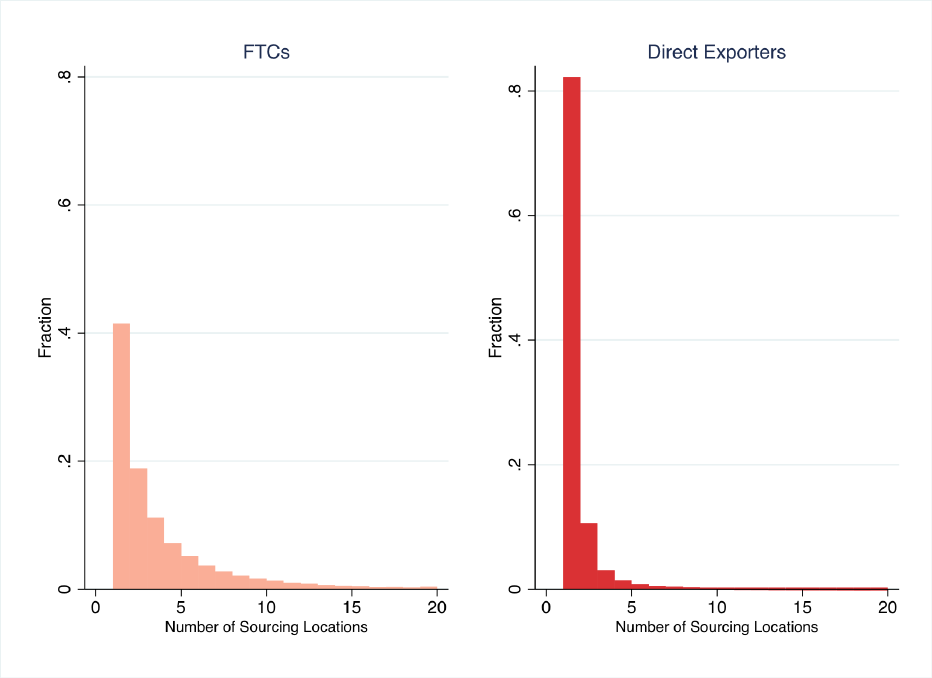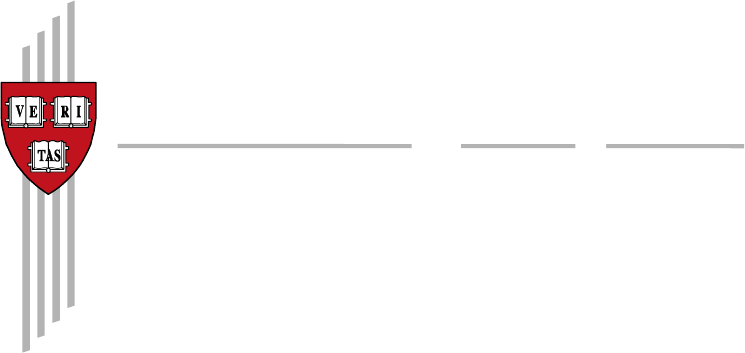
The Impact of Intranational Trade Barriers
on Exports: Evidence from a Nationwide
VAT Rebate Reform in China
Jie Bai and Jiahua Liu
CID Faculty Working Paper No. 373
December 2019
© Copyright 2019 Bai, Jie; Liu, Jiahua; and the President
and Fellows of Harvard College
at Harvard University
Center for International Development
Working Papers

The Impact of Intranational Trade Barriers on Exports:
Evidence from a Nationwide VAT Rebate Reform in China
Jie Bai Jiahua Liu
∗
December 13, 2019
Abstract
It is well known that various forms of non-tariff trade barriers exist within a country.
Empirically, it is difficult to measure these barriers as they can take many forms. We take
advantage of a nationwide VAT rebate policy reform in China as a natural experiment to
identify the existence of these intranational barriers due to local protectionism and study
the impact on exports and exporting firms. As a result of shifting tax rebate burden, the re-
form leads to a greater incentive of the provincial governments to block the domestic flow of
non-local goods to local export intermediaries. We develop an open-economy heterogenous
firm model that incorporates multiple domestic regions and multiple exporting technologies,
including the intermediary sector. Consistent with the model’s predictions, we find that ris-
ing local protectionism leads to a reduction in interprovincial trade, more “inward-looking”
sourcing behavior of local intermediaries, and a reduction in manufacturing exports. Anal-
ysis using micro firm-level data further shows that private companies with greater baseline
reliance on export intermediaries are more adversely affected.
∗
Contact information: Bai: Harvard Kennedy School, e-mail: jie [email protected]ard.edu; Liu: Harvard Kennedy School,
email: jiahua [email protected]ard.edu. We thank Nikhil Agarwal, Pol Antras, Abhijit Banerjee, Panle Jia Barwick, Arnaud
Costinot, Dave Donaldson, Jack Feng, James Harrigan, Marc Melitz, Benjamin Olken, Gerard Padro, Robert Townsend,
Jeffery Wang, and lunch, seminar and conference participants at ASSA annual meeting, Cornell, Harvard, MIT, and
NEUDC for helpful discussions and comments. All errors are our own.
1
1 Introduction
“Aside from tariff barriers (i.e., special charges levied at roadblocks), non-tariff methods such as
physical barriers, outright prohibition, low-interest loans, and other financial benefits for commercial
establishments marketing local goods, fines for commercial establishments marketing nonlocal goods,
legal restrictions on price differences between local and nonlocal goods sold in commercial establishments,
local purchasing quotas, and administrative trivia (e.g
˙
, medical, sanitation, epidemic prevention, product
quality, measurement, and other such licenses and certificates) were used to hamper trade in products
in a market economy.” (Young, 2000)
It is
well known that various forms of non-tariff barriers exist within a country. While local governments
cannot block their borders or impose tariffs, their influence over the local regulatory apparatus can allow
them to impose significant non-tariff barriers to discourage non-local firms and non-local goods from
entering the local markets. Young (2000) gives many examples of such non-tariff barriers in the Chinese
context. These barriers are especially likely to arise in countries’ where political and fiscal powers are
decentralized to subnational units. However, despite the general consensus on the existence of these local
trade barriers, we know relatively little about how costly they are in terms of real economic outcomes:
widespread interprovincial trade wars are very different from occasional protectionist practices. What
makes this a challenging empirical problem to study is precisely the fact that these local barriers can
take many forms, and unlike tariff barriers, they are difficult to measure or even just to observe.
In this study, we take advantage of a nationwide VAT rebate policy reform in China in 2004 as a nat-
ural experiment to first identify the existence of intranational trade barriers due to local protectionism
and then to quantify the impact on exports and firm performance. As a result of the shifting tax rebate
burden, the reform leads to a greater incentive of the provincial governments to block the domestic flow
of non-local goods to local export intermediaries. By exploring a unique feature of the transaction-level
Chinese Customs Data that allows us to trace the sourcing locations of the export intermediaries, we
show that the intermediaries indeed become more “inward-looking” after the reform.
To go beyond the descriptive evidence and examine the impact on interprovincial trade and man-
ufacturing exports, we develop a theoretical model to guide the empirical analysis. The model is built
on the standard open-economy heterogeneous firm model by incorporating multiple domestic regions
and multiple exporting technologies, including the intermediary sector. We model the intermediary
technology following Ahn, Khandelwal, and Wei (2011), but with a new focus on the intermediary’s
2
role of domestic sourcing. The model predicts a fall in interprovincial trade (related to exporting via
intermediaries) and a reduction in manufacturing exports as a result of rising local protectionism.
To bring the theory to the data, we explore subnational variations in rebate burden and exposure
to the reform. First, for each province, we construct a measure of predicted rebate burden based on the
local intermediaries’ sourcing patterns prior to the reform and the tax rebate formula. Consistent with
the descriptive evidence, we find that intermediaries located in provinces with a higher predicted rebate
burden become more “inward-looking” after the reform. Specifically, they source from fewer non-local
provinces and source a greater fraction of local goods. The results are robust to controlling for province
and time fixed effects, time-varying rebate rates, and province-specific time trends.
Using a difference-in-difference framework, we then examine the impact of increasing provincial
rebate burden on interprovincial trade flows of indirect exports (i.e., exports via intermediaries). Our
estimate implies a trade elasticity of 1.2 with respect to provincial rebate burden. The magnitude is
comparable to existing estimates in the trade literature with respect to physical transportation costs,
indicating that political barriers can act as important frictions in hindering domestic trade.
Next, we examine the impact on manufacturing exports and manufacturing firms. To do so, we
construct a measure of reform exposure for each province-industry as the weighted average of the
predicted rebate burdens, where the weights are given by a province-industry’s baseline reliance on
intermediaries located in different provinces. The results show that greater exposure to the reform
leads to reductions in both indirect exports as well as total exports. Using the NBS annual survey of
manufacturing firms, we show that, while some firms manage to switch to direct exporting, most of the
negative impact falls on private firms with a greater reliance on export intermediaries at baseline.
Last but not least, we explore the firm-level Customs data to shed light on local government behavior.
While systematic documentation of the protectionist practices does not exist, we find suggestive evidence
that local governments may target large intermediaries, either due to limited administrative capacity or
fixed costs of the intervention technology. However, beyond that, local officials do not appear to employ
additional local information in the targeting, such as an intermediary’s history of non-local purchase
and its product mix.
The study relates to the literature on domestic trade frictions. Ramondo, Rodr´ıguez-Clare, and
Sabor´ıo-Rodr´ıguez (2016) find that domestic frictions are key to explaining the discrepancy between
standard trade models and the data. Costinot and Donaldson (2016) find substantial gains from eco-
nomic integration among US agricultural markets from 1880-2002. More recent studies have quantified
domestic trade costs due to geographical barriers and poor transportation infrastructure (for example,
3

Limo and Venables (2001), Donaldson (2010), Banerjee, Duflo, and Qian (2012), and Faber (2014),
Anderson, Milot, and Yotov (2014), Atkin and Donaldson (2015), and Co¸sar and Fajgelbaum (2016)).
However, as discussed above, domestic trade barriers can take other forms. Lacking a good transporta-
tion network is responsible for the lack of greater economic integration, but it may not explain the full
story. Our findings show that political barriers imposed by local governments play an important role.
The paper also contributes to the literature on local protectionism (for example, Young (2000),
Naughton (2003), Bai, Du, Tao, and Tong (2004), Poncet (2003), Poncet (2005), and Holz (2009)).
There are two strands of this literature: the first hinges on patterns of regional convergence as evidence
of rising protectionism (Young, 2000). However, a challenge with this approach is the lack of a theoretical
yardstick with which to evaluate the changes: reversal of inefficient patterns of specialization can be
efficiency enhancing. The second strand of the literature relies on provincial input-output tables to
estimate the border effect from a gravity equation (Poncet, 2005). The estimate may be confounded by
the presence of non-traded local goods and non-homothetic preferences.
1
We use micro firm-level data
to address some of the limitations and identify local trade barriers under relatively weak assumptions.
Our study is closely related and complementary to a concurrent paper by Barwick, Cao, and Li (2017),
in which the authors document local protectionism from “home bias” in passenger vehicle purchasing.
We focus on the supply side and study firms’ responses in light of rising local protectionism.
Finally, the study relates to the literature on resource misallocation. Institutions that distort the
efficient allocation of resources can have a sizable effect on economic outcomes. Hsieh and Klenow
(2009) estimate that the distortions in the Chinese economy reduce manufacturing productivity by 30%
to 50%. Brandt, Tombe, and Zhu (2013) estimate a large distortion on aggregate TFP due to inefficient
factor inputs allocation within and between provinces in China. There has been a growing body of work
that tries to uncover particular sources of misallocation, including industrial policies and labor market
frictions (for example, Khandelwal, Schott, and Wei (2013), Fajgelbaum, Morales, Serrato, and Zidar
(2018) and Garicano, Lelarge, and Van Reenen (2016)). We show that local protectionism induced by
national tax policies can act as a potential source of resource misallocation.
The remainder of the paper is organized as follows. Section 2 describes the policy background.
Section 3 presents the model. Section 4 describes the data. Section 5 discusses the empirical strategy.
Section 6 presents the empirical results. Section 7 concludes.
1
Most of the studies rely on aggregate data. However, one limitation of the Chinese IO table is that it only reports a
net trade value, which aggregates the total net trade with the rest of China and the rest of the world. As a result, the
gravity equation estimates are also sensitive to functional form assumptions, including measures of distance between a
given province and the rest of China.
4

2 Background
2.1 Export Value-Added Tax Rebate Policy and the 2004 Reform
Value-added tax (VAT) is a general broad-based tax assessed on incremental value at each stage of the
production of goods and services. In China, the VAT rate is 17%, and it applies to most goods and
services that are bought or sold for use. The export tax rebate policy is such that the VAT paid for
exported goods can be refunded in whole or in part.
2
The idea is to remove taxes paid in all stages of
the production process so that the goods can enter the international markets without tax.
3
Under the
regime, when a manufacturer exports through an export intermediary (i.e., a foreign trade company,
or FTC), the FTC is entitled to a “Pay-First-and-Refund-Later” VAT refund treatment (Chan, 2008):
initially the FTC pays an output-tax-inclusive price to the manufacturer; after completing the export
5
transaction, the FTC can collect a partial or full refund of the tax paid earlier.
4
Prior to 2004, the central government was solely responsible for financing the VAT rebates —
after completing an export transaction, an exporter first receives its VAT refund from the provincial
government, which then receives the same amount of payment from the central government at the end
of each fiscal year. However, the rapid growth of exports after China entered the WTO in 2001 led
to a large backlog of rebate payments and put severe fiscal pressure on the central government. In
response to the mounting financial burden, the central government implemented a major reform in 2004
2
The WTO Agreement on Subsidies and Countervailing Measures (SCM, Article 1.1a) allows members to provide
rebates on export duties as long as the rebate does not exceed the full extent of the duty imposed. Thus, in contrast to
other trade policies such as export subsidies, VAT rebates are sanctioned by the WTO.
3
In practice, the VAT rebates have remained incomplete for most commodities in China, and the rebate rates have been
adjusted over time as a policy tool to boost exports (Bai, Wang, and Zhong, 2011).
4
In general, the exact VAT rebate formula varies across different business types. There are three VAT refund treatments
applied to different types of exporters:
1. Pay-first-and-refund-later: an exporter, typically a commercial enterprise, can have the VAT incurred during the
production process refunded in whole or in part prior to export. The refund rate could be lower than the VAT rate
charged. No tax burden is incurred if the refund rate equals to the VAT rate. This paper mainly analyzes the result
of a change to this treatment.
2. Exempt-credit-refund: an exporter, typically a production enterprise, will get refunded for the excess if the amount
of input VAT, from which the disallowed credit has already been deducted, is bigger than the VAT payable for the
current period. Exempt refers to the exemption of VAT for exports, and credit refers to the input VAT paid for the
purchase used in the manufacture of exports that will be offset against the output VAT paid on local sales.
3. Tax exempt: an exporter, typically an export-processing enterprise, is not entitled to a VAT refund because either it
has not previously paid any input VAT on exports or it has paid input VAT but the refund policy is not applicable.
An example is bonded materials directly imported for use in export processing.
5
In general, a Chinese manufacturer can export through an FTC in two ways: either by simply selling the goods to the
FTC or by authorizing the FTC as an exporting agent (Wang, 2019). Before 2007, most manufacturer-FTC partnership
was in the form of the former, in which the “Pay-First-and-Refund-Later” treatment applies.
5

that shifted part of the rebate burden to the provincial governments.
6
In particular, the new policy
stipulates that, for the amount of rebates claimed by an exporter, the central government would finance
75% of the rebates, with the remaining 25% covered by the provincial government, depending on where
the exporter is located.
7
The justification for the 75/25 sharing rule is that the VAT revenue is shared
between the central and provincial governments according to this ratio.
2.2 Rising Local Protectionism
While the reform alleviated the fiscal pressure on the central government, it created an unintended
consequence — it led to a strong incentive for provincial governments to discourage local FTCs from
servicing non-local manufacturers. Operating as export intermediaries, FTCs do not engage in man-
ufacturing activities but instead specialize in export services. They procure goods produced by other
manufacturing firms and resell them to the international markets after simple processing, such as re-
packaging and re-labeling. An FTC can source goods from manufacturers located in its own province or
from manufacturers located in other provinces. Under the post-reform rebate regime, for any non-local
goods sourced and exported by an FTC, the provincial government of the FTC has to finance 25% of
the VAT rebates despite the fact that it has not collected the VAT revenue share in the first place,
which is paid to the provincial government where the manufacturer is located.
Figure 1 provides a graphical illustration. In this example, an upstream manufacturing firm produces
t-shirts worth 1000 USD. At the point of transaction between the manufacturer and the FTC, the latter
pays the former 1000 USD plus 17% VAT. The VAT revenue is split between the upstream province
and the central government. At the end of the transaction, the manufacturing firm issues a VAT invoice
to the FTC, with which the latter can get the tax refunded after exporting the t-shirts. Prior to the
reform, the entire rebates were financed by the central government, but after the reform, the downstream
province where the FTC is located has to finance 25% of the rebates, even though it has not collected the
revenue share. This generates a large fiscal burden on the provinces where many FTCs are located. As
a result, the local governments have a strong incentive to block non-local goods, either by discouraging
the activities of the intermediary sector in general or by asking its local FTCs to divert more sourcing
toward local goods.
6
Note that the same reform also adjusted the rebate rates for many commodities across five distinct levels: 5%, 8%,
11%, 13%, and 17%, depending on the product category. In our empirical analysis, we collect detailed data on VAT rebate
rates and control for the concurrent changes across product sectors.
7
The sharing rule was later adjusted to 92.5/7.5 in 2005, in part due to the concerns over rising local protectionism
— see Section 2.2. Since 2015, it has completely reverted back to the original scheme, in which the central government
finances 100% of the rebates.
6

Media reports abound that the reform led to rising local protectionism in the ensuing years. Un-
fortunately, there has not been any systematic documentation of the protectionist measures introduced
by the local governments due to the illegal nature of such activities.
8
To understand the situation, we
conducted extensive research into media and government reports and interviewed a number of people
working in the intermediary sector. One specific protectionist measure stands out from these qualitative
accounts, which is through deliberate delays of VAT rebates for non-local goods: in particular, when
the local tax bureau receives a lot of VAT invoices for non-local goods filed by an FTC, it could delay
the refund to the firm. There were many reports of such delays in VAT rebates in the early 2000s (for
example, Zhong (2004); Wen (2005); Wu (2004)).
Consistent with the above discussion, many FTCs became more “inward-looking” after the reform
to avoid delays in VAT rebates from their local governments. Figure 2 describes the changes in FTCs’
sourcing patterns before and after the reform. Panel A plots the cumulative distribution function of
the number of sourcing provinces among the FTCs in different years. Panel B examines the fraction of
local goods in total export sales. We see that along both the extensive and intensive margins, the FTCs
had been becoming more outward-looking prior to the reform, but the trend sharply stopped in 2004.
9
While the time-series patterns are consistent with rising local protectionism, many macroeconomic
factors could be at play. Our empirical strategy controls for the aggregate shocks and explores within-
country across-province-industry and across-firm variations for identification (see Section 5).
2.3 Impacts on Manufacturing Exports and Firm Performance
In light of the disruption of the FTCs’ domestic sourcing, upstream manufacturing firms could be ad-
versely affected. Consider a typical manufacturing firm in China. The firm has two ways to export
its products to the international markets, either directly exporting on its own or indirectly exporting
through the FTCs.
10
Exporting through FTCs constitutes a significant share of the total export activ-
ities in China. Figure 3 shows that a relatively small number of FTCs account for more than 30% of
the country’s total ordinary exports between 2001 and 2006. Figure A.1 shows that FTCs are respon-
sible for large fractions of exports in four major export industries, namely textiles, food products and
8
The Provisions on Prohibiting Regional Blockade in Market Economic Activities enacted in 2001 explicitly forbids
local governments from restricting firms, in any manner, to purchase only the products and inputs that are locally made.
9
The trend picked up again in 2006, which is consistent with the scaling down of the local rebate burden from 25% to
7.5%. In our empirical analysis, we take into account the revision of the sharing rule in constructing the policy shocks and
the results are robust to this adjustment.
10
There are two modes of indirect exporting via FTCs: the first is through formal contracting and the second is direct
selling. The problem with the shifting tax rebate burden arises in the latter case; for the former, the rebate burden always
falls on the province where the manufacturing firm is located. Our study therefore focuses on the second case.
7

beverages, chemicals and chemical products, and electrical machinery and apparatuses.
Due to the high fixed costs of direct exporting, many small and medium enterprises have relied on
FTCs to export (Lin, 2017). This is especially true for manufacturing firms located in inland provinces.
Panel A of Figure 4 shows the distribution of reliance on FTCs as defined by the percentage of a
province’s total exports through FTCs. As the figure shows, many inland provinces heavily depend on
FTCs for exporting. On the other hand, most FTCs are located in the coastal areas, as shown in Panel
B of Figure 4.
11
As a result, small and medium manufacturers in inland regions may be particularly
susceptible to the protectionist practices that suppress non-local sourcing activities of the coastal FTCs.
In principle, the policy could also affect downstream manufacturing firms that source production
inputs from non-local upstream firms. To fully characterize the impact on the domestic supply chain,
one would need information on firm-to-firm transactions. In this paper, we focus on the role of the
intermediary sector and the impact on upstream manufacturing firms by exploring a unique feature of
the Chinese Customs data that allows us to trace the sourcing locations of the FTCs. We describe the
data in more detail in Section 4.
In the next section, we develop a theoretical framework to formalize the discussion above and derive
testable predictions to guide our empirical analysis.
3 Theoretical Framework
The model extends the standard open-economy heterogeneous firm model in Melitz (2003) by adding an
intermediary sector. We model the intermediary technology following Ahn, Khandelwal, and Wei (2011)
but focus on its role in domestic sourcing and the result of impeding such activity. Importantly, we allow
for multiple intermediary technologies with different costs of access, as well as heterogeneous reliance
on these technologies among different provinces in China. This enables us to examine the differential
impact of increasing the costs of “indirect exporting” (i.e., exporting through intermediaries) due to
rising local protectionism on regions with different baseline characteristics. The model generates several
reduced-form predictions that we bring to the data in the next section.
3.1 Basic Setup
Demand Side
Consider two countries, China and the Rest of the World (ROW), and two sectors, one differentiated-
11
Of the 31 provinces, 12 are classified as coastal provinces according to the official Chinese definition: Beijing, Fujian,
Guangdong, Guangxi, Hainan, Hebei, Jiangsu, Liaoning, Shandong, Shanghai, Tianjin, and Zhejiang.
8

good sector and one numeraire-good sector. Consumers in both countries have Cobb-Douglas preferences
over the two sectors. In particular, foreign consumers’ utility can be written as:
U =
A
α
1
A
α
2
, α
1
+ α
2
= 1.
1 2
where A
1
and A
2
are the subutility obtained from numeraire good and differentiated good respectively.
Within the differentiated-good sector, consumers have CES preference over different varieties ω:
Z
σ
σ
σ−1 σ−1 σ−1
σ−1 σ−1
(X
CR
) A
2
= q(ω)
σ
dω =
σ
+ (X
RR
)
σ
ω∈Ω
where X
ij
, for i, j ∈ {(C)hina, (R)OW }, represents the subutility derived from the consumption of
products made in i by consumers in j. Let P
CR
denote the price index of Chinese export in the ROW:
Z
1
P
CR
= p
CR
(ω)
1−σ
dω
1−σ
.
ω∈Ω
CR
Thus, demand from the ROW for variety ω made in China is:
p
CR
(ω)
−σ
X
CR
q
CR
(ω) =
P
CR
Supply Side
Chinese consumers offer one unit of labor and receive a normalized wage of 1 (assuming a freely traded
numeraire good produced by one unit of labor). Firms pay an entry cost of f
E
and draw productivity
φ from a Weibull distribution G(φ). Assuming constant marginal cost, the amount of labor required to
q
produce q units of output is l =
φ
for a firm with productivity φ. The CES demand function implies that
1−σ
1
R
CC
p
D
the optimal price for the domestic market is p
D
= The domestic profits is π
D
(φ) =
1
P
CC
.
ρφ
.
σ
A Chinese firm can access the foreign market by directly exporting on its own or indirectly exporting
through an FTC. For direct exporting, the firm incurs a per period fixed cost f
X
and a per unit
iceberg cost τ . For indirect exporting, the firm chooses among FTCs located in different provinces.
Each province has a perfectly competitive intermediary sector consisting of identical FTCs open to all
provinces. If a firm φ of province i sells its variety through the intermediary sector in province j, it
ij ij
pays a fixed cost f
I
and a per-unit variable cost γ
I
to the FTC but no longer incurs the iceberg cost.
Following Ahn, Khandelwal, and Wei (2011), we assume that the fixed cost of indirect exporting is
ij
lower than that of direct exporting, i.e., for any i and j, f
I
< f
X
.
9

3.2 Solving Firms’ Profit Maximization Problem
The timing is as follows:
1. Entrants pays f
E
to enter the market and draw productivity φ. Low-productivity entrants exit.
2. Surviving firms make production and export decisions: firms choose to stay domestic or serve
both the domestic and foreign markets. Exporters decide on the exporting technology: direct or
indirect exporting, and if the latter, which FTC to use.
3. Prices and quantities are set.
We solve the firm’s problem backward:
Stage 3
Direct exporter φ solves the profit-maximization problem
12
:
1 τ
π
X
(φ) = max π
X
(φ, p
X
) = p
X
q(p
X
) − q(p
X
)τ − f
X
⇒ p
X
(φ) =
p
X
φ ρφ
where p
X
is the price charged to foreign consumers. On the other hand, indirect exporter φ of province
i solves the problem:
ij
∗
ij
∗
ij
∗
1
ij
∗
ij
∗
ij
∗
γ
I
π (φ) = max π (φ, p
I
) = p
I
τq(τp
I
) − τq(τp
I
)γ − f ⇒ p (φ) =
I I I I I
p
I
φ ρφ
where province j
∗
is the profit-maximizing FTC province for firm φ, and p (φ) is the price the firm
I
charges to the FTC in province j
∗
. Since the intermediary sector is perfectly competitive, it passes the
iceberg trade cost by setting the price in the foreign market as τ p
I
. The exporter has to sell to the FTC
quantity τq in order for quantity q to reach the foreign market.
Stage 2
Firms decide
whether to produce and export, and if export, which exporting technology to use. Following
the result above, the profits from direct exporting is:
12
From now on, we abbreviate CR subscript for q
CR
, R
CR
, and P
CR
1−σ
1 τ
π
X
(φ) = R − f
X
.
σ ρφP
ij
∗
10

Similarly, the profits of indirect exporting through the intermediary sector in province j is:
ij
∗
ij
Let π
i
= π , where j
∗
= argmax
j
π .
I
I I
Firms choose the optimal production and exporting technology by solving the following:
1
τγ
ij
1−σ
ij
I
ij
π (φ) = R − f
I I
σ ρφP
π = max{π
I
+ π
D
, π
X
+ π
D
, π
D
}.
Stage 1
Finally
, a firm of province m
φ
decides whether to enter the market by calculating:
Z
E
φ
π(φ) = π(φ)dG(φ) − f
E
φ
3.3 Solving for Productivity Cutoffs of Various Exporting Technologies
Suppose there are M provinces in China. Due to the variation in the fixed and variable costs of
direct and indirect exporting technologies, for every province there is naturally a pecking order of
exporting technology, i.e., a productivity ladder that assigns firms with different productivities into
different optimal exporting technologies. Without loss of generality, suppose that for province i, the
ii
M
productivity cutoffs of indirectly exporting through M provinces are ranked as φ
ii
1
< φ
ii
2
... < φ ,
I I I
where φ
ii
m
denotes the productivity cutoff of indirectly exporting through FTCs in province i
m
, the
I
mth province in the productivity ladder of province i.
13
This leads to an important observation that
f
ii
m
ii
m−1
ii
m−1
> f and γ
ii
m
< γ ∀m ∈ [2, M ].
14
We assume that own province has the lowest fixed
I I I I
cost, and thus the own province is ranked at the last in the productivity cutoff ladder, i.e., i = i
1
.
Furthermore, since f
X
> f
ii
m
, ∀m and direct exporting incurs no additional variable cost, we have
I
φ
ii
m
< φ
X
, ∀m ∈ [1, M], where φ
X
denotes the productivity cutoff of direct exporting.
I
13
Mathematically, there may be a province j that would not be economically viable for indirect exporting by province
ij ij
0
ij ij
0
j
0
if there exists another province j
0
such that f > f and γ > γ . This can rationalize the empirical observations
I I I I
that a province never indirectly exports through another province. However, for tractability here we assume away such
provinces.
14
Suppose that for firms in province m, no two provinces have the same fixed and variable costs of indirect exporting.
ii
m−1
ii
m−1
If f
ii
m
> f and γ
ii
m
> γ , then province i
m
would be strictly dominated by province i
m−1
, and vice versa;
I I I I
ii
m−1
ii
m−1
if f
ii
m
< f and γ
ii
m
> γ , then province i
m−1
would rank above i
m
in the productivity cutoffs of indirect
I I I I
exporting.
11

We can obtain φ
ii
1
I
by setting the profits of indirectly exporting through local province to zero:
(γ
ii
1
1
)
1−σ
1−σ
π
ii
1
(φ
ii
1
⇒ φ
ii
1
I
) = 0, = A
I I I
f
ii
1
I
We can also solve any φ
ii
m
, m ∈ [2, M] from the indifference conditions:
I
1
(γ
ii
m
)
1−σ
− (γ
ii
m−1
)
1−σ
1−σ
π
ii
m
(φ
ii
m
ii
m−1
(φ
ii
m
⇒ φ
ii
m
I I
) = π ), = A
I I I I I
f
ii
m
ii
m−1
− f
I I
Finally, φ
X
can be obtained by equating the profits of exporting directly and the profits of exporting
indirectly through the highest ranked province in the productivity cutoff ladder:
τ
�
R
1−σ
where A = .
ρP σ
Figure A.3 illustrates the productivity cutoffs. One of the immediate implications from the discus-
sion above is that the most productive firms will be direct exporters, followed by indirect exporters,
and the least productive firms will serve domestic market only. We verify this pecking order in the
Chinese context: Figure A.4 plots the empirical TFP distribution of the three groups of firms, and the
patterns are largely consistent with the theoretical prediction, showing a rightward shift in productivity
distribution as we move from non-exporting firms to indirect and direct exporters.
15
1 − (γ
ii
M
)
1−σ
1
I
π
X
(φ
X
) = π
ii
M
(φ
X
), ⇒ φ
X
= A
1−σ
I
f
X
− f
ii
M
I
3.4 Testable Predictions
After the policy reform, a greater fraction of the tax rebate burden falls on the provincial government,
leading to rising local protectionism that hinders the non-local sourcing activity of the intermediary
sector. To map the empirical context into the model, we consider an increase in the costs of indirect
exporting through non-local intermediaries; the bigger the rebate burden (proxying a local government’s
incentives to block non-local trade), the greater the increase. For simplicity, we assume that the cost
of the protectionist measures passes through the variable cost of indirect exporting. We state the
15
We follow Olley and Pakes (1996) and Brandt, Van Biesebroeck, Wang, and Zhang (2017) to estimate the TFP of
the Chinese manufacturing firms. The TFP used in the plot is demeaned by province and industry. Because the export
volume in the Customs Database is direct exports and that in the NBS survey is total exports, we define domestic firms as
the ones that have zero exports in both datasets, indirect exporters as the firms which have positive exports in the NBS
survey but zero exports in the Customs Database, and direct exporters as the ones whose share of direct exports among
total exports are more than 0.9 (∼ the 90th percentile in the sample).
12

assumption formally below:
Assumption 1. Let c denote a measure of the tax rebate burden falling on the provincial governments.
ii
m
ii
m
ii
m
dγ dγ df
I I I
For any province i, > 0 if i
m
6= i, = 0 if i
m
= i, and = 0 ∀m ∈ [1, M],
dc dc dc
In principle, both the fixed costs and variable costs of indirect exporting may be affected. We derive
the predictions based on an increase in the variable costs, and all the results are qualitatively robust
for an increase in the fixed costs.
dP
CR
Assumption 2.
dc
= 0.
We abstract away from general equilibrium effects and focus on partial equilibrium predictions. Our
reduced form analysis explores subnational variations in rebate burdens and exposures to the reform,
controlling for aggregate time shocks.
16
Below, we derive five predictions on Chinese firms’ exporting behavior as a result of the rebate
burden and an increase in the costs of indirect exporting. Details of the proofs are in Appendix C.
Prediction 1. The number and the export volume of direct exporters increase in c.
Plot (a) in Panel A of Figure 5 illustrates how the number and the export volume of direct exporters
respond in response to an increase in c. For province i, as c increases, the variable cost of indirect
exporting increases through every non-local province, including province i
M
, the highest province in the
productivity cutoff ladder of indirect exporting. Therefore, some firms that were previously exporting
through the FTCs in province i
M
would switch to direct exporting, resulting in a leftward shift of the
productivity cutoff of direct exporting φ
X
and an increase in the volume of direct exporting.
Prediction 2. For each province, the number of indirect exporters decreases in c. The indirect exporting
volume also decreases in c if the productivity cutoffs increase across all indirect exporting technologies.
As c increases, the profits of indirect exporting through all provinces decrease, shifting up the
productivity cutoff between staying domestic and indirect exporting. Combined with Prediction 1,
[φ
ii
1
I
, φ
X
] shrinks and the number of indirect exporters decreases. However, the impact on the total
indirect exporting volume is theoretically ambiguous. This is because firms can switch to different
provinces for indirect exporting after the reform, depending on how much more costly it becomes to
access an intermediary sector in a given province. It could be that a firm switches to a province with
higher fixed cost but lower variable cost compared to what it has used before, in which case the firm’s
16
dγ
dP
CR
The theoretical results hold under a more general condition that > .
dc dc
13

(indirect) export volume would actually increase. On the other hand, if all the productivity cutoffs shift
to the right among the set of viable indirect exporting technologies, as illustrated in plot (b) in Panel
A of Figure 5, the indirect export volume would fall.
17
Next, we examine how domestic trade along different indirect exporting routes, from manufacturing
firms in a given province to the intermediary sector in another province, is distorted. Let R
ii
m
denote
I
the total indirect exporting volume flowing from province i to its mth ranked FTC province in the
productivity cutoff ladder prior to the reform:
Z
ii
m+1
φ
I
R
ii
m
ii
m
I
= r
I
(φ)dG(φ).
φ
ii
m
I
After the reform, with an increasing local tax rebate burden, we can show that:
(1)
Z
ii
m+1
1−σ
φ
ii
m+1
∂R
ii
m
I
∂r
ii
m
(φ) τγ
ii
m
�
∂Θ(φ ) ∂Θ(φ
ii
m
)
I I I I I
= dG(φ) + R × −
∂c
ii
m
∂c ρP ∂c ∂c
φ
I
| {z }
| {z }
Network effect; ambiguous sign
Price effect; ≤0
R
φ
where Θ(φ) = φ
0σ−1
dG(φ
0
). This equation decomposes the effect of increase in c on R
ii
m
into two
−∞
I
parts: the price effect and the network effect. The price effect captures the change in R
ii
m
if indirect
I
exporters in i continue to export through the same provinces. The effect channels through the effect of
c on p
I
and the response of foreign demand to the change of prices. On the other hand, the network
effect captures switchings among different indirect exporting routes: indirect exporters of province i
may cease to export through province i
m
or they may shift more trade to i
m
, depending on how the
other routes are affected. Panel B of Figure 5 illustrates the two effects graphically. Given that it takes
time to look for new intermediaries and re-optimize among the indirect exporting routes, in the short
run, one may expect that the price effect outweighs the network effect, as shown in the case of Panel B.
Prediction 3. Given an increase in c, for any province i: (1) local exporters rely more on local FTCs
after the reform, i.e., the number and the export volume of indirect exports through local FTCs increase
in c; (2) the indirect export volume through other provinces decreases if the price effect outweighs the
network effect (as defined in Equation (1)).
Finally, we examine heterogeneity across provinces based on their exposure to the reform, and map
these predictions to the data. Let B
ij
denote the percentage change of the variable cost of indirectly
dγ
I
ij
/dc
exporting from province i through j with respect to a change in c, i.e., B
ij
=
ij
. We can define a
γ
I
17
A sufficient condition is that for any province i, dγ
ii
m
/dc > dγ
ii
n
/dc, ∀m, n s.t. γ
ii
m
< γ
ii
n
before the reform.
I I I I
14

province i’s exposure to the reform:
Definition 1. The exposure of province i to an increase in c, denoted as E
i
, is the sum of the percentage
change in variable costs of indirect exporting through all provinces from province i, weighted by the
share of indirect export volume through each province:
X
R
ii
m
E
i
≡ B
ii
m
ω
ii
m
ω
ii
m
I
, where =
P
I I
R
ii
n
m∈[1,M]
n∈[1,M]
I
In
tuitively, a pro
vince is more “exposed” to the reform if it relies more on intermediaries in provinces
with larger increase in the variable cost of indirect exporting.
Prediction 4. If the price effect is sufficiently larger than the network effect, given an increase in c,
indirect export volume from province i decreases more through provinces with larger B
ij
.
Prediction 5. If the price effect is sufficiently larger than the network effect, given an increase in c, a
province with higher exposure E will experience a larger percentage decrease in indirect exports.
4 Data
4.1 Chinese Customs Database
Our main data set is the Chinese Customs Database, which provides transaction-level trade flows
information on the universe of China’s exports and imports. For this study, we focus on exports
during the time period between 2001 and 2006.
18
The data is collected and made available by the
Chinese Customs Office. For each transaction, we observe the exporting firm identity, ownership type
and location, trade type, value and quantity of the exports, 8-digit HS code, city in China where the
product is manufactured (i.e., the origin location), customs office where the transaction is processed
and the final destination. The origin location information is a unique feature of the Chinese data that
is typically not present in other Customs databases. Conversations with officials from the Chinese
Customs office revealed that the collection of this information is required by the State Administration
of Taxation, for the purpose of cross-validating the VAT receipts for tax rebate.
To examine the behavior of FTCs, we follow the strategy in Manova and Zhang (2009) to identify
the set of FTCs based on Chinese characters that have the English-equivalent meaning of “importer”,
18
China entered WTO in 2001.The data after 2006 is no longer at the “transaction” level, and thus does not allow one
to identify the origin location of each export transaction.
15

“exporter”, and/or “trading” in their firm name.
19
This classification is not perfect as there can be
both inclusion and exclusion errors.
20
As a first pass, Figure A.2 plots the sourcing patterns of FTCs
and non-FTCs using the pooled data from 2000 to 2006. Reassuringly, we see that on average, FTCs
source from more provinces than non-FTCs. Not surprisingly, most (80%) non-FTCs export products
that come from a single province–the province in which the exporting firm is located. In other words,
these are manufacturing firms that produce and export on their own. Panel A of Table 1 presents the
summary statistics of FTCs in the pre-reform baseline year 2003.
4.2 NBS Survey of Manufacturing Firms
To examine the impact of local protectionism on manufacturing firm performance, we merge the Customs
data with the NBS annual survey of manufacturing firms.
21
The annual survey is conducted by the
National Bureau of Statistics (NBS), and it includes all industrial firms that are identified as being
either state-owned or non-state firms with sales revenue above 5 million RMB. As discussed in Brandt,
Biesebroeck, and Zhang (2012), even though a large number of firms (80%) are excluded from the
sample, they account for only a small fraction (9.3%) of the total economic activities in China.
22
Panel
B of Table 1 presents the summary statistics of the balanced sample of manufacturing firms (i.e., 57,301
firms that appear in all 6 years in the data from 2001 to 2006).
23
One important variable in the NBS data is a firm’s total export revenue. Compared to the export
sales captured in the Customs data, which only reflects a firm’s direct exports, the self-reported amount
in the NBS data presumably captures both direct exports and indirect exports through FTCs. In
principle, we can derive a firm’s indirect export revenue by subtracting the two numbers. One concern
with this approach is reporting noise, especially if firms consider some of their sales to FTCs as domestic
sales rather than “exports”. We address this concern in our empirical analysis (see Section 6.4).
19
In pinyin (Romanized Chinese), these phrases are: jin4chu1kou3, jing1mao4, mao4yi4, ke1mao4 and wai4jing1.
20
As noted in Khandelwal, Schott, and Wei (2013), some state-owned manufacturers may export through trading arms
of their production facilities under a name that contains phrases such as importer, exporter and trader.
21
We follow the standard procedure and link firms by their names following Yu and Tian (2012). We improve on the
previous procedure by first standardizing firm names in both datasets.
22
Trade in services accounts for a small fraction of the total trade activities during this period. We follow the industry
concordance constructed by Brandt, Biesebroeck, and Zhang (2012) to ensure a coherent classification over time.
23
There is a sharp increase in the number of firms in the sample between 2003 and 2004 as a result of the 2004 Industrial
census—many firms above the 5 million RMB cutoff should have been in the sample in earlier years, but had been left
out due to issues with the business registry. To avoid the composition change, we focus on a balanced sample of firms. A
comparison between the balanced sample and the unbalanced sample can be found in Table B.1.
16

4.3 Export VAT Rebate Rates
We compile a comprehensive list of export VAT rebate rates at 10-digit HS product code from 2001 to
2006 based on official announcements released by the Chinese government.
24
We aggregate the rebate
rates to 6-digit HS code by taking arithmetic averages (rebate rates within a 6-digit code are usually
identical). Panel C of Table 1 describes the distribution of rebate rates across 6-digit HS industries
in 2003. Over 80% of goods have a rebate rate of 13%; others categories include 0%, 5%, 10%, and
17% (full rebate). Section 5.1 describes how we use the rebate rates to construct measures of predicted
rebate burden for local governments under the new policy.
4.4 Provincial Statistical Yearbooks
The Provincial Statistical Yearbooks provide basic macroeconomic statistics for 31 provinces in mainland
China. Panel D of Table 1 presents basic summary statistics for the year 2003. We use information on
government revenue and expenditures to construct various proxies for local fiscal capacity. We expect
that the higher the predicted rebate burden as a share of local fiscal capacity, the stronger the incentive
of the local government to discourage non-local sourcing to alleviate the rebate burden.
25
5 Empirical Strategy
This section describes the empirical strategy to test the predictions in Section 3. We focus on Prediction
4 and 5, which guide us to exploit subnational variations and employ a difference-in-difference strategy
for identification. Section 5.1 and 5.2 describe how we measure the rebate burden and exposure to
reform. Section 5.3 describes the empirical specifications for examining the impact on interprovincial
trade, sourcing patterns of FTCs, and exporting activities of manufacturing firms.
5.1 Predicted Rebate Burden
For each province, we compute a measure of predicted rebate burden based on local intermediaries’
pre-reform trading patterns and rebate rates across industries. Specifically, we calculate the amount of
VAT rebates each province would have to pay out due to its local FTCs’ non-local businesses for each
24
Export VAT rebate rates are published on the government website http://www.gov.cn/fuwu/chaxun/cktsl.html.
25
One caveat is that certain extra-budgetary sources of revenue are off the book (for example, money from selling lands,
which is known to be an important source of revenue for local governments in China). However, such information has
been poorly documented. To the extent that the different sources of revenue may be correlated, we perform a series of
robustness checks using various measures that are available.
17

post-reform year had the non-local trading volume stayed the same as the pre-reform period. We scale
the predicted rebate amount by a province’s fiscal capacity, measured by total government revenue, to
capture the degree of fiscal stress induced by the policy change.
26
Formally,
6
P P
ij
s∈S
0.25 × ι
st
× R
B
ˆ
j
i=j
I,s
= , for t ≥ 2004
t
G
j
where s is 6-digit HS code and S is the universe of export products
27
; ι
st
is the VAT rebate rate of sector
P
ij
s in year t; R is the sum of average indirect export volume from other provinces through j for
=j
the three years before the reform; G
j
indicates the average total government revenue of province j in
the pre-reform period. 0.25 is the rebate share borne by the provincial government after the reform.
28
i6
I,s
j
ˆ
B
t
= 0 for t < 2004.
Conceptually, we expect that the higher predicted rebate burden would lead to a stronger incentive
to discourage non-local sourcing and consequently to greater costs of accessing the local intermediary
B
ˆ
j
sector. Therefore, is a reduced-form way of capturing the cost shocks to the indirect exporting
t
dγ
I
ij
/dc
technology as a result of increasing c, mapping to B
ij
=
ij
in the model.
γ
I
Table 2 shows substantial variations across Chinese provinces in terms of the predicted rebate
burden.
29
An important part of the heterogeneity is coming from variations in baseline sourcing patterns
of the local FTCs, particularly the average non-locally sourced exports between 2001 and 2003.
5.2 Exposure to Reform
Next, we use the predicted rebate burden to construct a measure of reform exposure for each province.
The idea is that a province that relies more on FTCs in provinces with larger predicted rebate burden
would be more exposed to the reform in light of the greater protectionist incentives of other provinces.
Mathematically, following Definition 1 in the model, we construct the exposure measure as weighted
sum of the rebate burden:
X
E
ˆ
i
B
ˆ
i
m
ω
ii
m
= ˆ
t
t
I
m∈[1,M]
(2)
26
In the robustness checks, we consider alternative measures of fiscal capacity, including total tax revenue, VAT revenue,
and rollover balance, and obtain very similar results.
27
Throughout the paper, we use s to denote 6-digit HS code, S 2-digit HS code, and S the universe of export products.
28
There was a subsequent revision of the sharing rule after 2005, which changed the rebate share falling on the provincial
government to 0.075. In the robustness checks, we take into account the subsequent revision of the policy in constructing
the predicted rebate burden.
29
The complete list of predicted burdens in 2004 for each province can be found in Table B.2.
18

ii
R
m
where ωˆ
ii
m
=
P
I
ii
is
I
the average pre-reform share of indirect export volume of province i through
R
n
n
I
i
m
. It captures i’s baseline reliance on export intermediaries in other provinces.
Table 2 shows meaningful variations in reform exposure across provinces.
30
This is primarily driven
by heterogeneity in indirect exporting choices at baseline. Figure 6 illustrates the cases for four provinces:
two northern provinces, Shanxi and Qinghai, and two southern provinces, Jiangxi and Hunan. For the
two northern provinces, most of their indirect exports in 2003 were through FTCs in the northern
coastal provinces. The opposite is true for the two southern provinces, suggesting that distance matters
for domestic trade.
Analogously, we can define the exposure measure at province-industry (2-digit HS code) level:
X
E
ˆ
i
B
ˆ
i
m
ω
ii
m
= ˆ
St
t
I,S
m∈[1,M]
ii
R
m
where ωˆ
ii
m
I,S
I,S
=
P
ii
is the average pre-reform share of indirect exports of industry S in province i
R
n
n
I,S
that are through the intermediary sector of i
m
. This allows us to exploit finer subnational variations
for identification. We now turn to describe our empirical specifications in detail.
5.3 Empirical Specifications
5.3.1 Impact on Interprovincial Trade
Prediction 4 says that indirect export volume from province i would decrease more through provinces
with larger rebate burden. To examine this, we look at interprovincial trade flows and exploit hetero-
geneity in the predicted rebate burden of the downstream province:
(3)
ij
B
j
R = α + β
ˆ
+ ν
ij
+ λ
t
+ κ
i
Year + κ
j
Year + θ
1
ι
it
+ θ
2
ι
jt
+
ijt
It
t
The dependent variable is the total amount of indirect exports that originated from province i and were
exported through FTCs in province j. The key regressor is j’s predicted rebate burden in year t. Our
baseline regression controls for province-pair FE ν
ij
, year FE λ
t
, and province-specific linear time trends
for both provinces. Standard errors are clustered at the province-pair level.
This corresponds to a difference-in-difference specification. The key assumption for identification is
that without the reform, the average change in export volume would have been the same across each
30
The complete list of exposure measures in 2004 for each province can be found in Table B.2.
19

indirect exporting route. To examine this assumption, we check the correlations between the predicted
rebate burden with a rich set of provincial pre-reform characteristics, both in terms of the baseline level
and the growth rate.
31
The results, shown in Table B.3, are reassuring. Our main results in Section 6
are robust to controlling for these variables and their interactions with time (not shown).
One potential confounding factor is changing industrial rebate rates over time, which may be cor-
related with both the predicted rebate burden and the volume of indirect trade. To address this, we
further control for the average rebate rates faced by provinces i and j given their baseline export mix,
denoted as ι
it
and ι
jt
in Equation (3).
32
5.3.2 Impact on the Sourcing Patterns of FTCs
A
direct implication of Prediction 4 is that FTCs in provinces with a greater rebate burden would
become more “inward-looking” in terms of their sourcing behavior. To examine this, we run the following
difference-in-difference regression at the firm level:
(4)
Y
ft
= α + β B
ˆ
j
+ ν
f
+ λ
t
+ κ
j
Year + θι
jt
+
ft
t
where the outcome variables include exports sourced from local and non-local manufacturers, as well
as the share of exports sourced from local manufacturers by FTC f of province j at year t. The key
j
ˆ
regressor of interest is B , the predicted rebate burden of province j in which f is located. We control
t
for firm FE ν
f
, year FE λ
t
, province-specific linear time trends, and the average rebate rate faced by
m
f
. Standard errors are clustered at the province level.
33
31
The variables we examine include the baseline levels and the growth rates of provincial government revenue, balance,
tax revenue, value-added tax, GDP, population and the baseline levels of total provincial exports, direct exports, indirect
exports, number of FTCs, and number of exporting firms.
32
The average rebate rate faced by province i is constructed as the average rebate rates of industries weighted by their
pre-reform value shares in the total exports the province manufactures:
X
01−03
i’s total exports of s
ι
it
= ι
st
× .
s∈S
i’s total exports
01−03
The average rebate rate faced by province j is constructed as the average rebate rates of industries weighted by their
pre-reform value shares in total indirect exports through j:
P
X
r
ij
i
s
ι
jt
= ι
st
×
P P
ij
s∈S
v
r
v∈S i
33
In total, there are 31 provinces. All the main results in Section 6 are robust to using bootstrapped standard errors.
20

5.3.3 Impact on Manufacturing Exports
To examine the impact of local protectionism on manufacturing exports, we test Prediction 5 by using
the empirical exposure measure E
ˆ
i
described in Section 5.2:
St
(5) Y
i
= α + β E
ˆ
i
St
+ ν
i
+ µ
S
+ λ
t
+ κ
i
Year + θι
iSt
+
iSt
St
where the outcome variables include total exports and indirect exports originated from province-industry
iS in year t. The regression controls for province FE, industry FE, year FE, and province-specific linear
time trend. As discussed above, we further control for the time-varying average rebate rate at the
province-industry level.
34
Standard errors are clustered at the province level.
35
The identification assumption is that without the reform, the average change in export volume would
have been the same across each province or province-industry. Table B.4 examines the correlations
between the province-level exposure measure with a rich set of provincial pre-reform characteristics,
both in terms of the baseline level and the growth rate. The main results in Section 6 are robust to
controlling for these variables and their interactions with time (not shown).
5.3.4 Impact
on Manufacturing Firms
Finally,
we examine the impact on manufacturing firms in terms of their performance and exporting
behavior using the firm-level annual NBS survey data. As discussed in Section 4.2, we can compute a
firm’s indirect exporting volume by comparing the export revenue reported in the NBS data and that
registered in the Customs data. Using this information, we can measure a firm’s baseline reliance on
indirect exports, IndirectDependence, as the fraction of indirect exports over total exports in the pre-
reform period. We focus on the sample of manufacturing firms with positive export volume at baseline
(either direct or indirect). A simple difference-in-difference regression examines the differential impact
of the reform on firms with varying degrees of baseline reliance on indirect exports:
Y
φt
= α + βIndirectDependence
φ
× Post
t
+ ν
φ
+ λ
t
+ κ
i
Year + θι
it
+
φt
(6)
34
The average rebate rate of industry S (2-digit HS) in province i at year t is constructed analogously to ι
it
in Footnote
32 as the average rebate rates of exports weighted by the pre-reform value share in total exports of industry S in province
i :
X
01−03
i’s total exporexportst of s
ι
iSt
= ι
st
× .
s∈S
i’s total exports of S
01−03
35
When the dependent variable is total exports, we modify the empirical exposure measure to more closely capture the
reform’s potential effect on total exports. In particular, the weight in Equation (2) becomes the pre-reform value share of
indirect exports over total exports.
21

E
i
E
ˆ
i
Y
φt
= α + β
1
IndirectDependence
φ
×
ˆ
St
+ β
2
St
+ ν
φ
+ λ
t
+ κ
i
Year + θι
ist
+
φt
where the outcome variables include direct and indirect export revenue, dummies for direct and indirect
exporting, and total sales (including domestic sales) of firm φ in province i at year t. The key regressor
is the interaction between firm φ’s baseline reliance on indirect exports and the post-reform dummy,
which equals to 1 for t ≥ 2004. λ
t
and ν
φ
are year and firm fixed effects. The regression further controls
for the province-specific linear time trend and average rebate rate. Standard errors are clustered at the
province level.
We could replace the post-reform dummy with the reform exposure measure:
(7)
The
same framework also allows us to examine the heterogeneous impact across different types of
firms. In light of a negative shock on the indirect exporting technology, firms that face greater challenges
of switching to direct export would be more adversely affected. We examine the heterogeneity across
firms in Section 6.4. Last but not least, as discussed in Section 4.2, one caveat of the IndirectDependence
measure is that firms may not report all indirect exports in the NBS survey. In other words, some of the
“non-exporters” in the NBS data could well export through FTCs. We return to this point in Section
6.4 after presenting the main results.
6 Results
6.1 Impact on Interprovincial Trade
We begin by examining the impact of increasing provincial rebate burden on interprovincial trade flows
of indirect exports, following the empirical specification in Equation (3).
Results are shown in Table 3. Columns 1 and 2 show that increasing the predicted burden of a
province reduces the amount of indirect exports from other provinces, consistent with Prediction 4.
At the same time, the value share of indirect exports from other provinces via the local intermediary
sector decreases, as shown in Columns 3 and 4, and so does the number of FTCs engaging in non-
local sourcing, as shown in Columns 5 and 6. Based on the coefficient estimate in Column 2, we
can compute the elasticity of interprovincial trade flows of indirect exports with respect to provincial
rebate burden, which equals to 1.15.
36
This implies that an increase in a province’s rebate share from
36
Given that the indirect exports dependent variable in Section 5.3.1 is under inverse hyperbolic sine transformation,
√
R
2
+1
It
the elasticity is calculated as ξ = β × B
t
i
× ≈ βB
t
i
. We use the 2004 provincial average predicted burden as an
R
It
empirical equivalent for B
t
i
.
22

25% to 30% would lead to a reduction of 23% of indirect exports from other provinces through the
local intermediary sector.
37
The magnitude is around 30% of existing elasticity estimates in the trade
literature with respect to physical transportation costs, suggesting that political barriers due to local
protectionism can act as important frictions in domestic trade.
38
Table B.5 shows the results using alternative measures of predicted burden. Table B.6 measures
predicted rebate burden accounting for the revision of the sharing rule in 2005. The results are robust.
6.2 Impact on the Sourcing Patterns of FTCs
Next, we examine how increasing provincial rebate burden affects the sourcing patterns of the FTCs.
Table 4 presents the results following the empirical specification in Equation (4). Consistent with the
results at the interprovincial level, Columns 1 and 2 show that increasing rebate burden decreases the
volume of indirect exports from non-local manufacturers. The magnitude of the estimated coefficient in
Column 2 implies that increasing local rebate share from 25% to 30% would decrease a local FTC’s non-
local sourcing by 12%.
39
This captures the intensive-margin effect, i.e., conditioning on still engaging
in non-local sourcing, comparing to the 23% reduction of total non-local indirect exports in Section 6.1,
which captures both the intensive-margin and extensive-margin effects.
Columns 3 and 4 examine the impact on local goods. While negative, the impact is much less
pronounced compared to non-local goods (Column 4 versus Column 2). Together, these results imply
that the FTCs become more inward-looking after the reform: the share of local goods increases as firms
shift their sourcing activities away from non-local manufacturers, as shown in Columns 5 and 6.
The results using different measures of the predicted rebate burden are presented in Table B.7 and
Table B.8. The results are robust to the alternative definitions.
6.3 Impact on Manufacturing Exports
Given that exporting through non-local FTCs constitutes an important exporting channel for Chinese
manufacturers (Figure 4), we next turn to examine the impact of increasing local trade barriers on man-
ufacturing exports, exploiting variations in the exposure to the reform across provinces and industries.
Table 5 shows the regression results, following the specification in Equation (5). Columns 1 and
2 show that exports of a province-industry is negatively affected by its exposure to the reform. The
37
Using the estimated elasticity, we can compute the effect as (
0.3−0.25
× 100%) ×
ˆ
ξ = −23%.
0.25
38
Recent papers such as Bernard, Eaton, Jensen, and Kortum (2003) and Eaton, Kortum, and Kramarz (2011) use
firm-level data and estimate trade elasticity in the range of 3.6 to 4.8.
39
The calculation follows the same procedure explained in Footnote 36 and 37.
23

magnitude of the estimated coefficients implies that increasing the VAT rebate share from 25% to 30%
would decrease total exports of a given province-industry by 4% and decrease indirect exports by 6%.
40
Results using alternative exposure measures (based on different measures of predicted rebate burden)
are presented in Table B.9 and Table B.10. Results are robust.
6.4 Impact on Manufacturing Firms
Finally, we delve into the level of individual manufacturers and examine how their production and
exporting activities are affected by the reform based on their reliance on indirect exporting prior to the
reform. We focus on the sample of exporting firms at baseline.
41
Columns 1 and 2 of Table 6 report
the regression results of estimating Equations (6) and (7). The results indicate a substitution pattern
from indirect export to direct export among Chinese manufacturers after the reform.
42
The coefficient
estimates in Panel A imply that, with a median exposure in the year after the reform, a firm with a
10 percentage point higher baseline dependence on indirect exporting would experience a 20% greater
reduction in indirect exports and a 9% increase in direct exports.
43
Alternatively, for a firm with a
median baseline dependence on indirect exporting (among exporters), increasing the local government’s
VAT rebate share from 25% to 30% would decrease indirect exports by 7% and increase direct exports
by 4%.
44
Despite the substitution, Column 3 shows that firms with a greater baseline dependence on
indirect exporting experience a greater reduction in total exports after the reform, especially if they
are located in provinces with greater exposure to the reform. Columns 4 and 5 examine the extensive
margin responses, and the results are consistent with the above. Results using alternative exposure
measures (based on different measures of predicted rebate burden) are presented in Table B.11.
Next, we investigate the heterogeneous impact across firms. Given that firms may switch to direct
exporting when indirect exporting becomes more expensive, those who can more easily switch would be
less affected. Given the relatively high fixed costs of direct exporting, the switchers are more likely to
40
The calculation follows the same procedure explained in Footnote 36 and 37.
41
Exporting firms are defined as firms with positive export value reported in the NBS survey between 2001 and 2003.
Results on non-exporters are shown in Table B.12. We see that the impact of the reform mostly falls on the exporters. In
principle, the non-exporters could be affected via local general equilibrium effects.
42
Since more than 75% of existing exporters sell more than 97% of their exports indirectly prior to the reform as shown
in Table 1, the majority of firms experienced a decrease in indirect exports and an increase in direct exports when we take
into account the main effect of exposure and the interaction effect (Panel A of Table 6).
43
Since direct and indirect exports are generally large in value, when taken inverse hyperbolic transformation, we have
p
ln(y + y
2
+ 1) ≈ ln(y)+ln(2). Therefore, the fraction change in y given a change in the dependence on indirect exporting
β
1
×
ˆ
E×ΔIndirectDependence
− 1. can be calculated as
y
1
− 1 = e
y
0
44
Analogous to the previous footnote, the fraction change in y given a change in the exposure can be calculated as
y
1
β
1
×Δ
ˆ
E×IndirectDependence+β
2
×Δ
ˆ
− 1 = e
E
− 1.
y
0
24

be firms with good access to credit and/or sufficient working capital. We consider two proxies, namely
ownership type and baseline size. It has been well documented that in the Chinese context, state
owned enterprises (SOEs) enjoy easier access to bank credit than private firms (e.g
˙
, Song, Storesletten,
and Zilibotti (2011)). To examine the heterogeneity, we add a triple interaction term to our main
specifications in Equations (6) and (7):
(8)
(9)
Y
φt
= α + β
1
IndirectDependence
φ
× Post
t
+ β
2
IndirectDependence
φ
× Post
t
× z
φ
+ β
3
Post
t
× z
φ
+ ν
φ
+ λ
t
+ κ
i
Year + θι
it
+
φt
Y
φt
=
St
+ β
2
IndirectDependence
φ
× E
ˆ
i
α + β
1
IndirectDependence
φ
× E
ˆ
i
St
× z
φ
+ β
3
E
ˆ
i
E
ˆ
i
St
+ ν
φ
+ λ
t
+ κ
i
Year + θι
it
+
φt
St
× z
φ
+ β
4
where z
φ
indicates: (1) a dummy of being a SOE, defined using a firm’s registered capital share, and
(2) log baseline average annual output.
Table 7 reports the results using the exposure measure in Equation (9). The results of estimating
Equation (8) are presented in Table B.13. Panel A shows that the adverse impact of the reform primarily
falls on private firms with a greater baseline reliance on indirect exporting, whereas SOEs are much
better shielded in terms of the reductions in indirect exports and appear to be able to better switch
to direct exporting (however, the estimates are noisy in Column 2). On the other hand, we do not see
much heterogeneity in terms of baseline firm size (Panel B).
So far, the analysis builds on the assumption that we can infer a firm’s indirect exports by comparing
the reported total export revenue in the NBS survey data and the direct exports captured in the Customs
data. However, to the extent that firms may not consider all of their indirect exports as “exports”,
some of the “non-exporters” in the NBS data could well be exporting through FTCs and thus would be
exposed to the reform as well. To examine this possibility, we perform an alternative empirical analysis
that explores heterogeneity across industries in terms of export intensity. We measure export intensity
by the fraction of directly exporting firms in a given 2-digit HS industry (see Table 1 Panel C). The
idea is that if a firm is a “non-exporter” in one of the export-intensive industries (i.e., industries with
high foreign demand for Chinese exports), then it is more likely to have been exporting through FTCs,
compared to a “non-exporter” in non export-intensive industries. As a result, the former group would be
25

(10)
more affected
by the reform. Specifically, we can run the following difference-in-difference specification:
Y
φt
= α + β
1
E
ˆ
i
E
i
St
+ β
2
ExportIntensity
S
×
ˆ
St
+ ν
φ
+ λ
t
+ κ
i
Year + κ
S
Year + θι
iSt
+
φt
.
where the s
ample consists of “non-exporters” in the NBS survey and the key regressor is the interaction
between export intensity of firm φ’s industry and the reform exposure of φ’s province-industry iS. We
control for province and industry linear time trends, and average rebate rate at province-industry level.
Standard errors are clustered at the province level.
Results are shown in Table 8. We see that “non-exporters” in more export-intensive industries suffer
greater reductions in total sales and output in light of greater exposure to the reform, consistent with the
discussion above. Reassuringly, as a falsification test, there is no significant difference in performance
among “non-exporters” in the least export-intensive industries across provinces with different exposure
to the reform.
6.5 Discussion
The reduced results in this section lend empirical support to rising local protectionism after the reform.
While systematic documentation of various protectionist practices does not exist, we try to shed some
light on local government behavior by exploring additional firm-level variations we observe in the data.
As discussed in Section 2.2, deliberate delays of VAT rebates are reported as a commonly used tool
of discouraging non-local sourcing of the FTCs. The question is, how is it carried out? Specifically,
do local tax officials target large FTCs, perhaps due to fixed costs of their intervention technologies or
limited administrative capacity? Do they take advantage of other local information in the targeting,
such as an FTC’s history of non-local purchase and the types of products an FTC handles?
To examine these possibilities, we extend the baseline FTC regression framework in Equation (4)
and add two additional interaction terms:
(11)
Y
ft
= α + β
1
B
ˆ
t
j
+ β
2
B
ˆ
t
j
× R
f
+ β
3
B
ˆ
t
j
× S
f
+ ν
f
+ λ
t
+ κ
j
Year + θι
jt
+
ft
where R
f
is the pre-reform average exports of FTC f and S
f
is the pre-reform average share of total
rebates attributable to non-local goods.
The results are shown in Table 9. Columns 1 and 2 suggest that local governments may indeed
target large firms, but not necessarily those with large baseline non-local rebate share (conditioning on
size). We further investigate the possibility of industry-specific targeting. That is, do local governments
26

target industries with higher rebate rates? One observation is that FTCs, unlike manufacturing firms,
typically source and export multiple product varieties: the average is 13 and the median is 7 at the
2-digit HS level. We consider every product line within a given FTC and run the following regression:
B
ˆ
j
B
ˆ
j
Y
fSt
= α + β
1
+ β
2
× ι
S
+ ν
fS
+ λ
t
+ κ
j
Year + θι
jt
+
ft
t t
The key regressor is the interaction term between the predicted local rebate burden and the average
industry rebate rate prior to the reform. Column 3 of Table 9 shows limited evidence of industry-
specific targeting, which may not be surprising given the multi-product nature of the intermediary
firms. Overall, the results suggest that most of the government intervention appears to take place at
the firm level.
7 Conclusion
This
study tak
es advantage of a nationwide VAT rebate policy reform in China in 2004 as a natural
experiment to identify the existence of intranational trade barriers and to study the impacts on export
activities and firm performance. As a result of the shifting tax rebate burden, the reform leads to a
greater incentive of the provincial governments to block the domestic flow of non-local goods to local
export intermediaries. We document reduced form evidence consistent with rising local trade barriers as
a result of the policy change, which leads to a reduction in interprovincial trade, more “inward-looking”
sourcing behavior of the local intermediaries, and a reducxtion in manufacturing exports. Exploring
micro firm-level data, we further show that the negative impact mainly falls on private companies with
a greater baseline reliance on export intermediaries.
Intranational trade barriers can arise for many reasons. Our study shows that political barriers
imposed by local governments can play an important role. These barriers act as wedges that could distort
the flow of goods within the domestic economy and affect real economic activities. As highlighted in
Melitz (2003), policies that hinder the reallocation process or otherwise interfere with the flexibility of the
factors and goods markets may delay or even prevent a country from reaping the full benefits from trade.
China and many other developing countries have experienced significant global integration over the past
decades. However, the question is, to what extent have the domestic frictions undermined countries’
gains from global integration? Examining the interaction between intranational and international trade
costs remains an important area for empirical research. We leave this for future exploration.
27

References
Ahn, J., A. K. Khandelwal, and S.-J. Wei (2011): “The role of intermediaries in facilitating trade,”
Journal of International Economics, 84(1), 73–85.
Anderson, J. E., C. A. Milot,
and Y. V. Yotov (2014): “How much does geography deflect
services trade? Canadian answers,” International Economic Review, 55(3), 791–818.
Atkin, D.,
and D. Donaldson (2015): “Who’s Getting Globalized? The Size and Implications of
Intra-national Trade Costs,” Working Paper 21439, National Bureau of Economic Research.
Bai, C.-E., Y. Du, Z. Tao,
and S. Y. Tong (2004): “Local protectionism and regional specialization:
evidence from China’s industries,” Journal of International Economics, 63(2), 397–417.
Bai, C.-E., X. Wang,
and X. Zhong (2011): “The Effect of Tax Rebate Policy Changes on China’s
Exports:An Empirical Analysis,” China Economic Quarterly, 10(3), 799–820.
Banerjee, A., E. Duflo,
and N. Qian (2012): “On the Road: Access to Transportation Infrastruc-
ture and Economic Growth in China,” Working Paper 17897, National Bureau of Economic Research.
Barwick, P. J., S. Cao,
and S. Li (2017): “Local Protectionism, Market Structure, and Social
Welfare: China’s Automobile Market,” Working Paper 23678, National Bureau of Economic Research.
Bernard, A. B., J. Eaton, J. B. Jensen,
and S. Kortum (2003): “Plants and Productivity in
International Trade,” American Economic Review, 93(4), 1268–1290.
Brandt, L., J. V. Biesebroeck,
and Y. Zhang (2012): “Creative accounting or creative destruc-
tion? Firm-level productivity growth in Chinese manufacturing,” Journal of Development Economics,
97(2), 339–351.
Brandt, L., T. Tombe,
and X. Zhu (2013): “Factor market distortions across time, space and sectors
in China,” Review of Economic Dynamics, 16(1), 39–58.
Brandt, L., J. Van Biesebroeck, L. Wang,
and Y. Zhang (2017): “WTO Accession and Perfor-
mance of Chinese Manufacturing Firms,” American Economic Review, 107(9), 2784–2820.
Chan, A. (2008): An Overview of the VAT Export Refund Rules in China. Tax Notes International.
Cos¸ar, A. K.,
and P. Fajgelbaum (2016): “Internal Geography, International Trade, and Regional
Specialization,” American Economic Journal: Microeconomics, 8(1), 24–56.
Costinot, A.,
and D. Donaldson (2016): “How Large Are the Gains from Economic Integration?
Theory and Evidence from U.S. Agriculture, 1880-1997,” Working Paper 22946, National Bureau of
Economic Research.
Donaldson, D. (2010): “Railroads of the Raj: Estimating the impact of transportation infrastruc-
ture,” Working Paper 16487, National Bureau of Economic Research.
Eaton, J., S. Kortum,
and F. Kramarz (2011): “An Anatomy of International Trade: Evidence
From French Firms,” Econometrica, 79(5), 1453–1498.
Faber, B. (2014): “Trade Integration, Market Size, and Industrialization: Evidence from China’s
National Trunk Highway System,” The Review of Economic Studies, 81(3), 1046–1070.
28

Fajgelbaum, P., E. Morales, J. C. S. Serrato, and O. Zidar (2018): “State Taxes and Spatial
Misallocation,” The Review of Economic Studies, 86(1), 333–376.
Garicano, L., C. Lelarge,
and J. Van Reenen (2016): “Firm Size Distortions and the Productivity
Distribution: Evidence from France,” American Economic Review, 106(11), 3439–79.
Holz, C. A. (2009): “No Razor’s Edge: Reexamining Alwyn Young’s Evidence for Increasing Inter-
provincial Trade Barriers in China,” The Review of Economics and Statistics, 91(3), 599–616.
Hsieh, C.-T.,
and P. Klenow (2009): “Misallocation and Manufacturing TFP in China and India*,”
The Quarterly Journal of Economics, 124(4), 1403–1448, SO: The Quarterly Journal of Economics
November 1, 2009 124(4):1403.
Khandelwal, A. K., P. K. Schott,
and S.-J. Wei (2013): “Trade Liberalization and Embedded
Institutional Reform: Evidence from Chinese Exporters,” American Economic Review, 103(6), 2169–
95.
Limo, N.,
and A. J. Venables (2001): “Infrastructure, Geographical Disadvantage, Transport Costs,
and Trade,” The World Bank Economic Review, 15(3), 451–479.
Lin, F. (2017): “Credit Constraints, Export Mode and Firm Performance: An Investigation of China’s
Private Enterprises,” Pacific Economic Review, 22(1), 123–143.
Manova, K.,
and Z. Zhang (2009): “China’s Exporters and Importers: Firms, Products and Trade
Partners,” Working Paper 15249, National Bureau of Economic Research.
Melitz, M. J. (2003): “The Impact of Trade on Intra-Industry Reallocations and Aggregate Industry
Productivity,” Econometrica, 71(6), 1695–1725.
Naughton, B. (2003): How Much Can Regional Integration Do to Unify China’s Markets?pp. 204–232.
Stanford University Press.
Olley, G. S.,
and A. Pakes (1996): “The Dynamics of Productivity in the Telecommunications
Equipment Industry,” Econometrica, 64(6), 1263–1297.
Poncet, S. (2003): “Measuring Chinese Domestic and International Integration,” China Economic
Review, 14(1), 1–21.
(2005): “A Fragmented China: Measure and Determinants of Chinese Domestic Market Dis-
integration,” Review of International Economics, 13(3), 409–430.
Ramondo, N., A. Rodr
´
ıguez-Clare,
and M. Sabor
´
ıo-Rodr
´
ıguez (2016): “Trade, Domestic
Frictions, and Scale Effects,” American Economic Review, 106(10), 3159–84.
Song, Z., K. Storesletten,
and F. Zilibotti (2011): “Growing Like China,” American Economic
Review, 101(1), 196–233.
Wang, X. (2019): “Comparing Different Modes of FTCs,” China and Foreign Entrepreneurs, 33, 3–4.
Wen, X. (2005): “New Export Rebate Policy Put Pressure on Local Governments’ Finances,” China
Business Journal.
Wu, Y. (2004): “Export Rebate Trigger Local Fiscal Conundrum,” Asia Pacific Economic Times.
29

Young, A. (2000): “The Razor’s Edge: Distortions and Incremental Reform in the People’s Republic
of China,” The Quarterly Journal of Economics, 115(4), 1091–1135.
Yu, M.,
and W. Tian (2012): “China’s Processing Trade: A Firm-Level Analysis,” Rebalancing and
Sustaining Growth in China, pp. 111–148.
Zhong, J. (2004): “Local Protectionism on the Rise: Big Exporting Provinces Unhappy about New
Rebate Policy,” Business Watch Magazine.
30
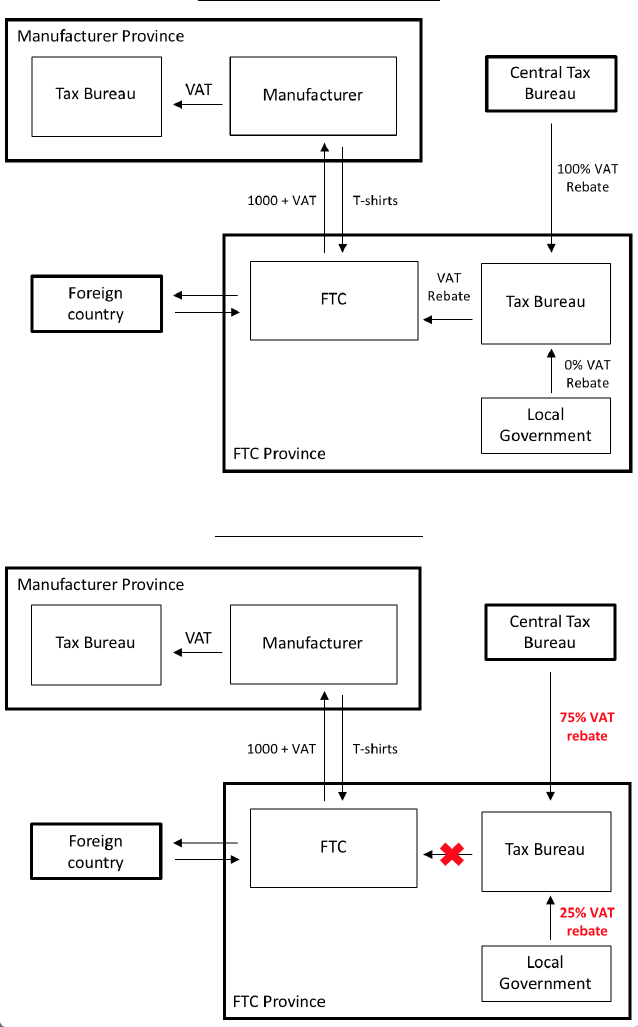
Figure 1: Export VAT Rebate Obligations Before and After the 2004 Reform
Panel A. Prior to Reform
Panel B. Post Reform
Note: This figure illustrates the export rebate obligations of the central and FTC governments before and after
the 2004 policy reform, when a manufacturer indirect exports T-shirts through an FTC. In this example, we
assume complete rebate of VAT, i.e
˙
, rebate rate equals to VAT rate. Panel A illustrates the case prior to the
reform and Panel B illustrates the case post reform.
31
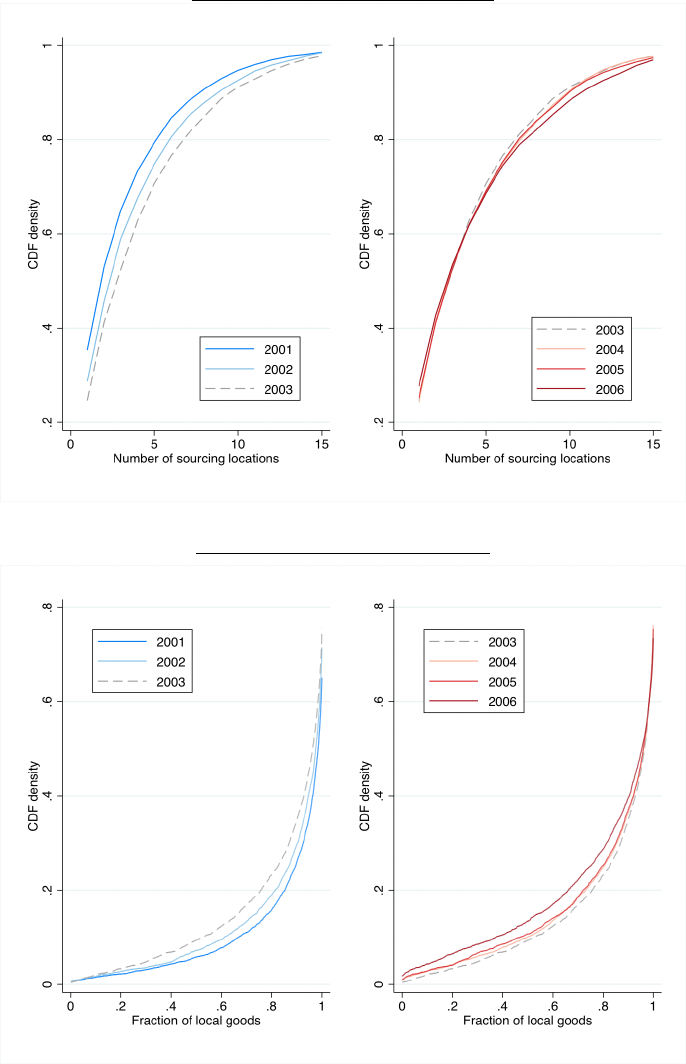
Figure 2: Changes in FTCs’ Sourcing Pattern
Panel A. The Extensive Margin
Panel B. The Intensive Margin
Note: This figure shows the changes in FTCs’ sourcing patterns from 2001 to 2006. The sample consists of FTCs that
had engaged in ordinary manufacturing export throughout 2001-06. Panel A is a CDF plot of the number of sourcing
locations of an FTC for each of the six years, and Panel B is a CDF plot of the fraction of local goods exported by an
FTC. In both panels, the left graphs exhibit the years prior to the reform (2001-03) and the right graphs show the
post-reform years (2004-06) along with 2003 as a reference year. Panel A indicates the increase in the number of sourcing
locations slowed down immediately after the reform in 2004 but started to bounce back after the reversion of the policy
in 2005. Similarly, one can observe the decrease in the fraction of local exports temporarily stopped right after the reform
in 2004 but resumed following the reversion of the policy in 2005.
32
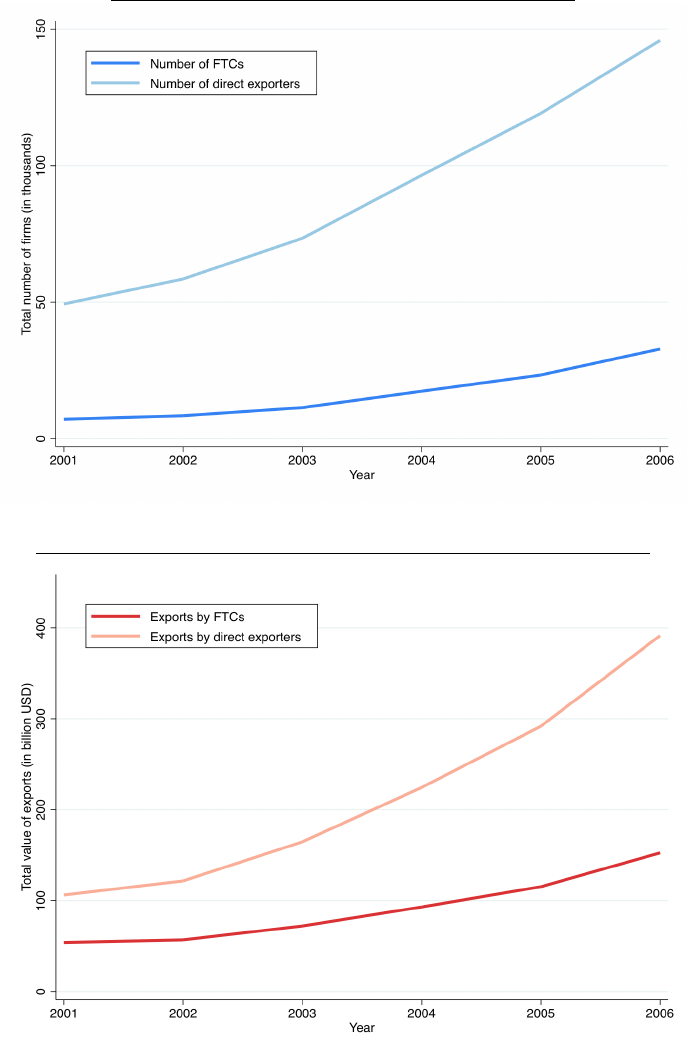
Figure 3: The Role of FTCs in China’s Manufacturing Exports
Panel A. Number of FTCs and Direct Exporters
Panel B. Manufacturing Exports by FTCs and Direct Exporters
Note: This figure describes the role of FTCs in China’s manufacturing exports between 2001 and 2006. Panel A
plots the numbers of FTCs and direct exporters engaging in ordinary manufacturing export from 2001 to 2006.
Panel B plots the total value of exports by FTCs and direct exporters from 2001 to 2006.
33
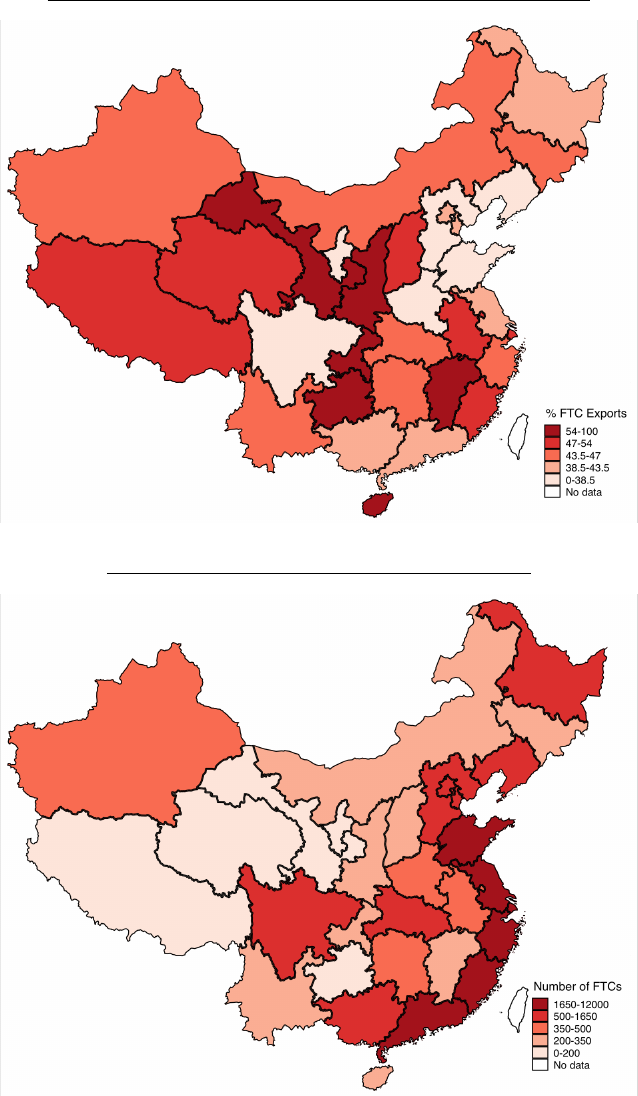
Figure 4: The Geography of FTCs and FTC Reliance
Panel A. Geographical Distribution of Reliance on FTCs
Panel B. Geographical Distribution of FTCs
Note: This figure describes the geography of FTCs and reliance on indirect exporting through FTCs. Panel A shows the
2003 share of indirect exports among total manufacturing exports by province. Panel B shows the geographical
distribution of FTCs that engaged in ordinary manufacturing exports in 2003. Each color gradient consists 20% of the
sample. The map is a map of land territory of China, which is based on the standard map GS(2016)2884 from the
Standard Map Service of the National Administration of Surveying, Mapping, and Geoinformation of China.
34
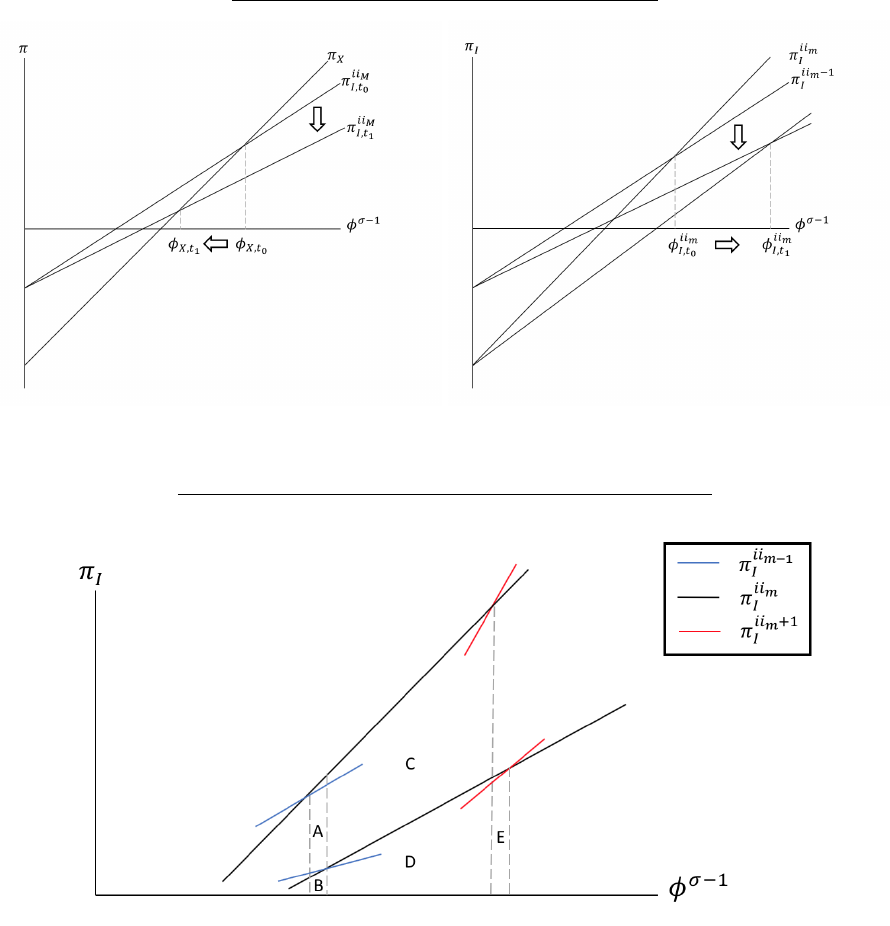
Figure 5: Predicted Impacts of Increasing Local Rebate Burden
Panel A. Changes in Exporting Technologies
(a) Direct exporting (b) Indirect exporting
Panel B. Interprovincial Trade Flow of Indirect Exports
Note: Panel A illustrates how the productivity cutoffs of direct and indirect exporting change if the share of the VAT
rebate burden to be paid by provincial governments increases. π
X
(φ) is the profits of direct exporting of firm φ in
province i, and π
I
ii
m
(φ) is the profits of indirect exporting through province i
m
, the mth ranked province in province i’s
indirect exporting productivity cutoff ladder (see Section 3.3 for detail). φ
X
is the productivity cutoff of direct exporting
and φ
ii
I
m
is the productivity cutoff of indirect exporting from province i through i
m
. In (a), the cutoff of direct exporting
shifts to the left as firms around the old cutoff find it more profitable to switch to direct exporting. In (b), the cutoff of
indirect exporting through province i
m
shifts to the right as firms around the old cutoff find it more profitable to switch
to indirect exporting through province i
m−1
.
Panel B illustrates how the indirect export volume of province i through province i
m
would change given an increase in c.
The indirect export volume prior to the change is proportional to the sum of area A, B, C and D and the indirect export
volume after the change is proportional to the sum of area D and E. The effect of the increase in c can be decomposed
into two parts, the price effect which is proportional to area A and C and the network effect which is proportional to area
A and B minus E. In the scenario shown in the figure, the overall effect of an increase in c can be roughly approximately
by the price effect since the former outweighs the latter by a large margin.
35
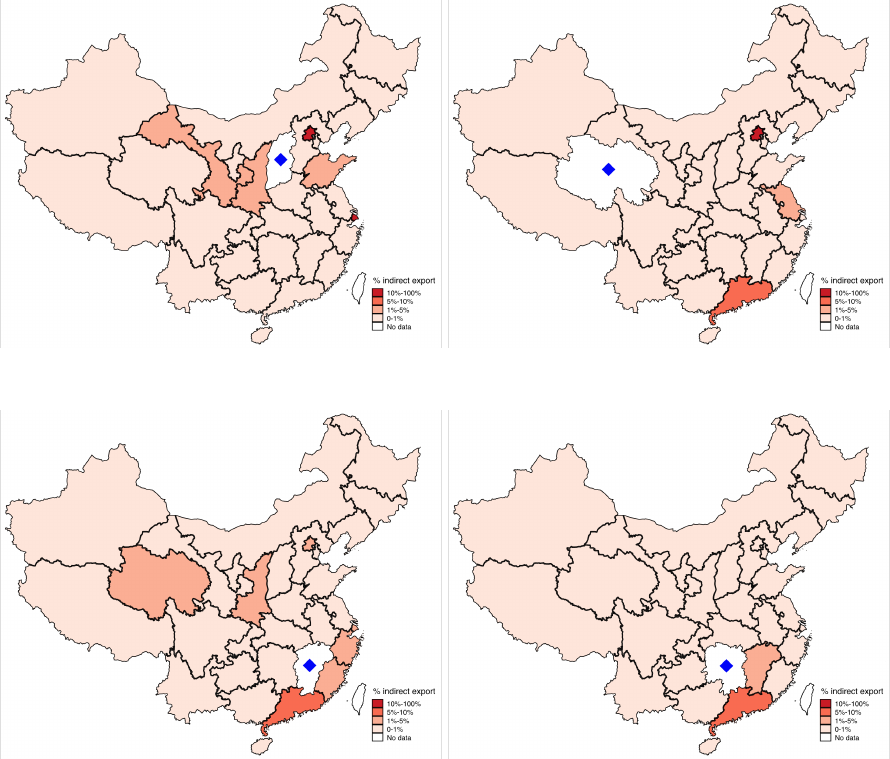
Figure 6: Heterogeneity in Reliance on Non-local FTCs for Indirect Exporting
(a) Shanxi (b) Qinghai
(c) Jiangxi (d) Hunan
Note: This figures plots the baseline reliance on other provinces for indirect exporting in terms of the share of
indirect exports for four provinces, namely Shanxi, Qinghai, Jiangxi and Hunan. In each subfigure, the province
marked with a blue diamond is the manufacturing province that relies on other provinces for indirect exporting.
The figure exhibits clear heterogeneity among manufacturing provinces in terms of the degree of reliance on
each of other provinces for indirect exporting. The map is a map of land territory of China, which is based on
the standard map GS(2016)2884 from the Standard Map Service of the National Administration of Surveying,
Mapping, and Geoinformation of China.
36

37
Table 1: Summary Statistics of the Baseline Year
Variable Obs Mean SD Min Q1 Q2 Q3 Max
Panel A: FTCs (Customs Database)
Non-locally sourced FTC exports 11324 .844 4.08 0 0 .0109 .289 175
Locally sourced FTC exports 11324 5.52 17.5 0 .0968 .678 3.45 543
Share of locally sourced FTC exports 11324 .846 .276 0 .84 .993 1 1
Number of HS2 varieties 11324 12.6 13.3 1 2 7 19 67
Panel B: Manufacturing Firms (NBS Survey)
Is exporter prior to reform 57301 .249 .432 0 0 0 0 1
Indirect exports 57301 1.17 9.92 0 0 0 0 670
Direct exports 57301 .111 1.29 0 0 0 0 173
Total exports 57301 1.28 10.1 0 0 0 0 670
Average share of indirect exports 57301 .225 .405 0 0 0 0 1
Average share of indirect exports among exporters 14254 .903 .216 .00108 .971 1 1 1
Output 57301 .0944 .766 0 .011 .0225 .0525 86
Sales 57301 .0927 .759 0 .0107 .0219 .0512 86
Employment 57301 387 1852 0 76 150 312 126876
Is SOE 57301 .205 .404 0 0 0 0
1
Panel C: Industries (VAT Rebate Rate & NBS Survey)
VAT rebate rate (HS6) 5227 .137 .0373 0 .13 .15 .17 .17
Export intensity (HS2) 23 .245 .148 .0587 .122 .228 .288 .589
Panel D: Provinces (Provincial Statistical Yearbook)
GDP 31 45 37.4 1.85 23.9 28.6 60 158
Population 31 41.4 26.9 2.72 19.3 38.2 61.6 96.7
Fiscal revenue 31 3.83 3.55 .0982 1.67 2.66 4.07 15.8
Tax revenue 31 2.18 2.36 .0683 .847 1.27 2.12 9.87
Fiscal balance 31 .809 .83 -.0698 .31 .589 .887 4.08
VAT revenue 31 .697 .686 .0113 .278 .471 .734 2.82
Note: This table presents the summary statistics of the baseline year 2003 for the four main datasets we use in the analysis, namely the Chinese Customs
Database, the NBS Survey of Manufacturing Firms, the Export VAT Rebate Rate Database, and the Provincial Statistical Yearbooks. We organize the statistics
into four panels based on unit of observation: FTCs, manufacturing firms, industries, and provinces. In particular, Panel A is based on an unbalanced panel
of FTCs whereas Panels B, C, and D are all based on balanced panels. All summary statistics are in the baseline year 2003 except for average share of indirect
exports which is the 2001-2003 average and export intensity which is an industry’s average percentage of firms engaging in exporting activity in the NBS
survey between 2001 and 2003. The currency unit in Panel A and B is million USD and in Panel D is billion USD.

38
Table 2: Heterogeneity in Predicted Rebate Burden and Exposure Measure
Variable Obs Mean SD Min Q1 Q2 Q3 Max
Panel A: Provinces
Predicted rebate burden (amount) in 04 31 .00662 .00831 .000123 .00174 .00437 .00686 .0316
Predicted rebate burden (% fiscal revenue) in 04 31 .196 .163 .0379 .09 .161 .214 .86
Exposure measure in 04 31 .0187 .0168 .000565 .00971 .0134 .0214 .0744
Average non-locally sourced FTC exports 01-03 31 .212 .266 .00378 .0587 .14 .219 .99
% of non-locally sourced FTC exports 01-03 31 18.4 10.8 2.73 10.2 16.8 24.9 48.8
Average rebate rate of manufacturers in 04 31 .122 .00875 .102 .118 .126 .128 .13
Average rebate rate of FTCs in 04 31 .124 .0075 .104 .121 .127 .128 .132
Panel B: Province-industries
Exposure measure in 04 1977 .0237 .0529 1.72e-7 .00213 .00778 .0215 .86
Indirect exports in 03 1977 .0362 .142 0 .000345 .0026 .0168 2.01
Total exports in 03 1977 .0829 .298 0 .00106 .00779 .0418 4.22
Average rebate rate of manufacturers in 04 1977 .123 .0224 0 .127 .13 .13 .17
Note: This table presents the heterogeneity in 2004 predicted rebate burden and exposure measure and FTCs’ pre-reform sourcing pattern. The currency unit is billion
USD. In general, the 2004 predicted rebate amount is calculated as the pre-reform average of non-locally sourced FTC exports × the 2004 rebate rate × share of rebate
burden on provincial government (see Section 5.1 for details on constructing predicted burdens). We then scale it based on provincial governments’ fiscal capacity, namely
the pre-reform average of fiscal revenue. The exposure measure of a province is calculated as a weighted average of intermediary provinces’ predicted burden, weighted by
the reliance on each intermediary province (see Section 5.2 for details on constructing the exposure measure at both province and province-industry levels).
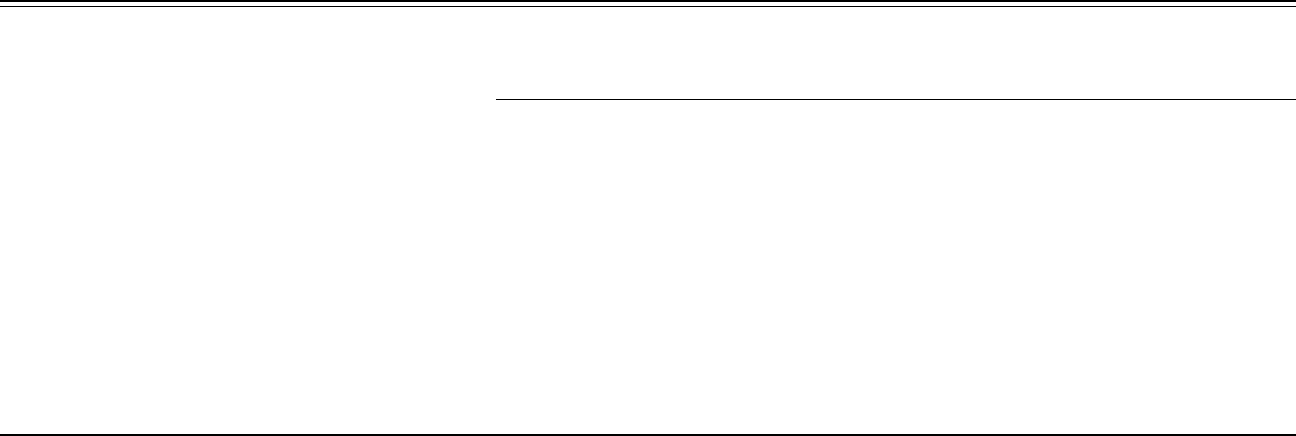
39
Table 3: Impact on Interprovincial Trade of Indirect Exports
Sample: China Customs Data 2001-2006,
Balanced Sample of Pairs of Manufacturing Province and Intermediary Province
Indirect exports from
manufacturing province
(1) (2)
from manufacturing province
(3) (4) (5) (6)
Predicted burden -6.181***
(1.115)
-5.888***
(1.110)
-0.0118***
(0.00311)
-0.0112***
(0.00308)
-11.35***
(2.738)
-6.856**
(3.109)
Observations 5580 5580 5580 5580 5580 5580
Pair FE Y Y Y Y Y Y
Year FE Y Y Y Y Y Y
Manufacturing province specific linear time trend Y Y Y Y Y Y
Intermediary province specific linear time trend Y Y Y Y Y Y
Manufacturing province weighted rebate rate Y Y Y
Intermediary province weighted rebate rate Y Y Y
Share of Indirect exports Number of FTCs hired
Note: This table examines the changes in interprovincial trade of export goods by intermediary provinces’ predicted rebate burden. Each observation is a pair of a
manufacturing province and an intermediary province in a given year. The dependent variables are indirect exports from the manufacturing province through FTCs in the
intermediary province (Columns 1 and 2), the value share of indirect exports through the intermediary province over all indirect exports from the manufacturing province
(Columns 3 and 4), and the number of FTCs in the intermediary province hired by the manufacturing province (Columns 5 and 6). We apply inverse hyperbolic sine
transformation on indirect exports to account for zero-valued observations. The key regressor of interests is the predicted rebate burden of the intermediary province (as %
of provincial fiscal revenue; see Section 5.1 for details on constructing predicted burdens). All regressions control for pair fixed effect, year fixed effect, intermediary-province-
and manufacturing-province-specific linear time trends. Even columns further control for the average rebate rate of the two provinces. Standard errors are clustered at the
province-pair level. *** implies significance at 0.01 level, ** 0.5, * 0.1.
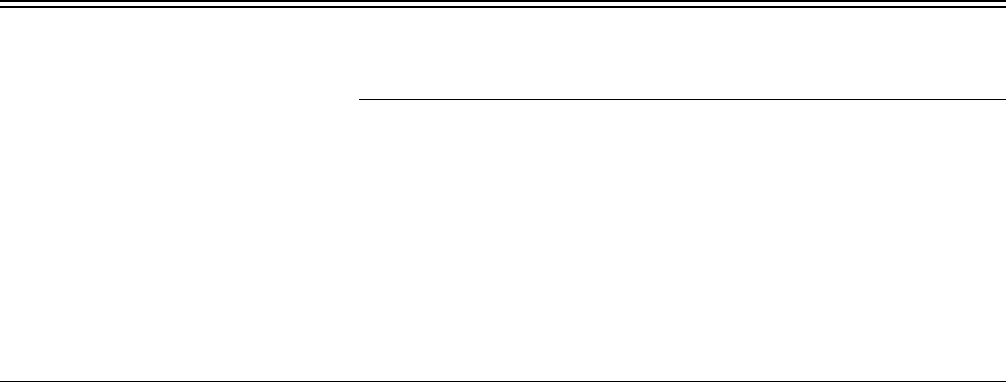
Table 4: Impact on FTCs’ Sourcing Activities
Sample: China
Customs Data 2001-2006, Unbalanced Sample of FTC
Non-locally
sourced
FTC exports
(1) (2)
Locally sourced
FTC exports
(3) (4)
Share of non-locally
sourced FTC exports
(5) (6)
Predicted burden -2.091***
(0.457)
-3.155***
(1.103)
-0.205
(0.314)
-1.282**
(0.568)
0.0925***
(0.0161)
0.105***
(0.0364)
Observations 100189 100189 100189 100189 100189 100189
Firm FE
Year FE
Province specific linear time trend
Province-level weighted rebate rate
Y
Y
Y
Y
Y
Y
Y
Y
Y
Y
Y
Y
Y
Y
Y
Y
Y
Y
Y
Y
Y
Note: This table examines the changes in FTCs’ sourcing activities by local provinces’ predicted rebate burden. The dependent
variables are exports of an FTC bought from non-local manufacturers (Columns 1 and 2), exports of an FTC bought from local
manufacturers (Columns 3 and 4), and value share of exports from local manufacturers (Columns 5 and 6). We apply inverse
hyperbolic sine transformation on non-locally and locally sourced FTC exports to account for zero-valued observations. The regressor
of interest is the predicted rebate burden (as % of provincial fiscal revenue; see Section 5.1 for details on constructing predicted
burdens). All regressions control for firm fixed effect, year fixed effect, province-specific linear time trend. Standard errors are
clustered at the province level. *** implies significance at 0.01 level, ** 0.5, * 0.1.
40
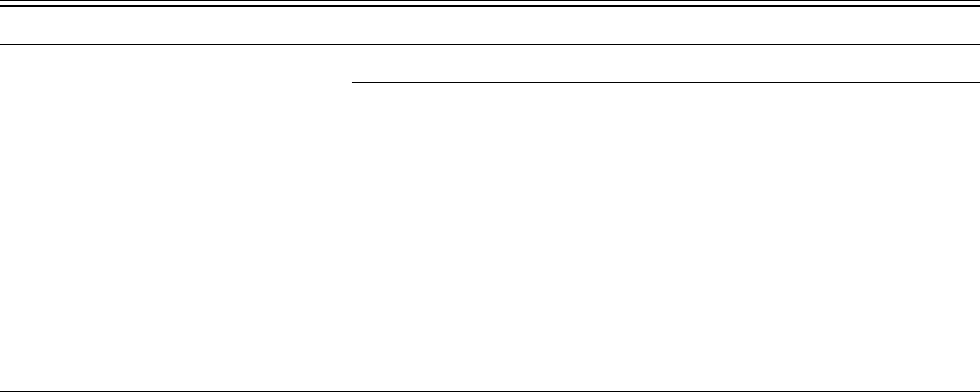
Table 5: Impact on Manufacturing Exports
Sample: China Customs Data 2001-2006, Balanced Sample of Chinese Province-industries
Indirect exports
(1) (2)
Total exports
(3) (4)
Exposure -6.73***
(1.52)
-6.75***
(1.51)
-9.23***
(1.94)
-9.23***
(1.93)
Observations 11862 11862 11862 11862
Province FE
Industry FE
Year FE
Province specific linear time trend
Weighted rebate rate
Y
Y
Y
Y
Y
Y
Y
Y
Y
Y
Y
Y
Y
Y
Y
Y
Y
Y
Note: This table examines the changes in manufacturing provinces’ exporting activities by exposure to reform. The dependent
variables are total exports produced in a manufacturing province-industry (Columns 1 and 2) and indirect export produced in a
province-industry (Columns 3 and 4). We apply inverse hyperbolic sine transformation on indirect exports and total exports to
account for zero-valued observations. The regressor of interest is the exposure measure constructed using the predicted burdens
(as % of provincial fiscal revenue; see Section 5.2 for details on constructing the exposure measures). The sample is a balanced
panel of province-industries from 2001 to 2006. All regressions control for province fixed effects, industry fixed effects, year fixed
effects, province-specific linear time trend, and weighted-rebate rate. Standard errors are clustered at the province level. ***
implies significance at 0.01 level, ** 0.5, * 0.1.
41
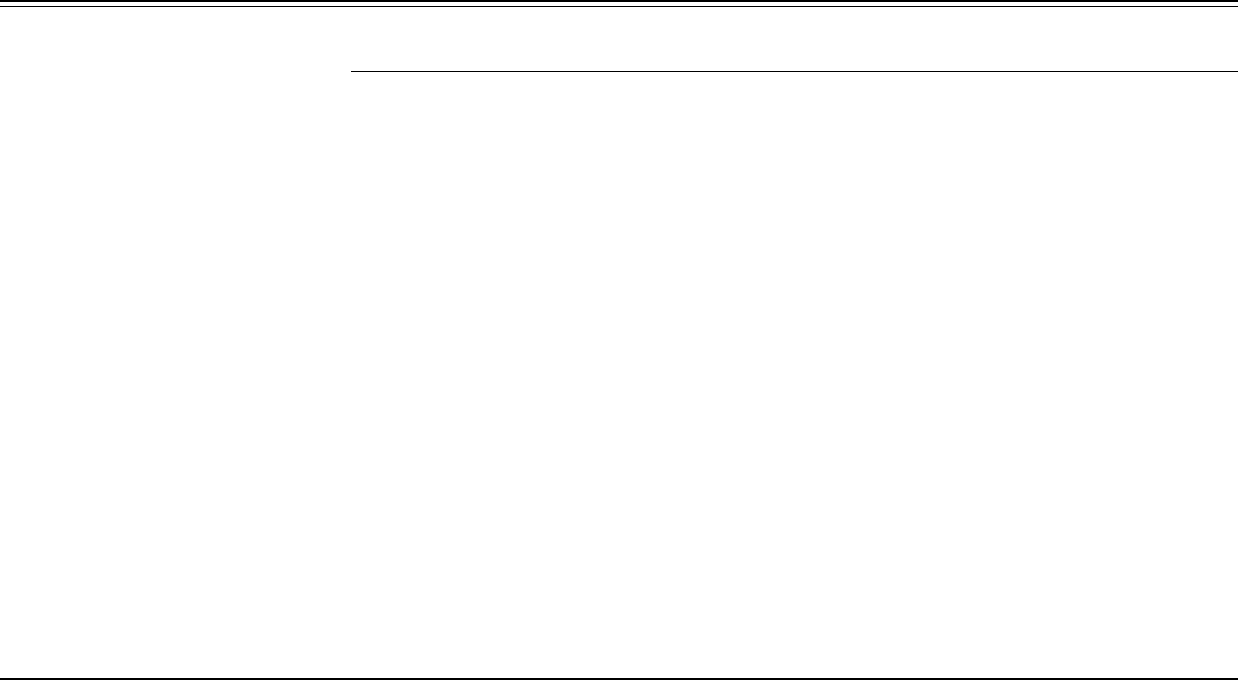
42
Table 6: Impact on Manufacturing Firms
Sample:
China NBS Data 2001-2006, Balanced Sample of Baseline Exporters
Indirect exports
(1)
Direct exports
(2)
Total exports
(3)
Is indirect exporter
(4)
Is direct exporter
(5)
Panel A: Using exposure measure
IndirectDependence X Exposure -46***
(10.8)
18.4*
(9.81)
-46.2***
(11.6)
-2.66***
(.742)
3.42***
(.435)
Exposure 39.9***
(9.89)
-14.6
(9.24)
40.1***
(10.8)
2.3***
(.67)
-2.95***
(.288)
Observation 61206 61206 61206 61206 61206
Panel B: Using post-reform dummy
IndirectDependence X Post -2.6***
(.377)
1.25**
(.496)
-2.59***
(.378)
-.154***
(.0267)
.191***
(.00976)
Observation 61272 61272 61272 61272 61272
Firm FE
Year FE
Province specific linear time trend
Weighted rebate rate
Y
Y
Y
Y
Y
Y
Y
Y
Y
Y
Y
Y
Y
Y
Y
Y
Y
Y
Y
Y
Note: This table examines the changes in Chinese manufacturers’ production and exporting activities by its exposure to reform and reliance on indirect export
channel. The dependent variables are firms’ indirect exports, direct exports, total exports, and whether firms are indirect exporters or direct exporters. The sample
is a balanced panel of above-scale existing exporters prior to the reform. We apply inverse hyperbolic sine transformation on indirect exports, direct exports, and
total exports to account for zero-valued observations. The regressor of interest is the interaction term between the pre-reform dependence on indirect exporting
and either the exposure measure for Panel A (as % of provincial fiscal revenue; see Section 5.2 for details on constructing the exposure measures) or a post-reform
dummy for Panel B. The pre-reform dependence on indirect exporting is defined as the pre-reform fraction of indirect exports over total exports. All regressions
control for firm fixed effects, year fixed effects, and province-specific linear time trend, and weighted-rebate rate. Panel A in addition controls for exposure. Standard
errors are clustered at the province level. *** implies significance at 0.01 level, ** 0.5, * 0.1.

Table 7: Heterogeneous Impact on Manufacturing Firms by Ownership Type and Baseline Firm Size
Sample: China
NBS Data 2001-2006, Balanced Sample of Baseline Exporters
Indirect exp
orts
(1)
Direct exports
(2)
Total exports
(3)
Panel A: Heterogeneity on Firm Ownership
IndirectDependence X Exposure X SOE 59.6***
(14.4)
30.7
(19.2)
65.4***
(14.5)
IndirectDependence X Exposure -137***
(25.8)
-15.2
(22.9)
-146***
(27.2)
Exposure X SOE -60.6***
(14)
-38.3**
(18.3)
-66.1***
(14.3)
Exposure 133***
(24.7)
31.6
(21.1)
142***
(26.6)
Observation 29976 29976 29976
Panel B: Heterogeneity on Firm Size
IndirectDependence X Exposure X Pre-reform Output 3.52
(2.14)
.505
(3.75)
5.09**
(2.45)
IndirectDependence X Exposure -88.6***
(28.9)
13.9
(38.9)
-108***
(35.6)
Exposure X Pre-reform Output 3.52
(2.14)
.505
(3.75)
5.09**
(2.45)
Exposure 76.1**
(33.2)
-27.4
(43.2)
92.7**
(42.7)
Observation 61206 61206 61206
Firm FE
Year FE
Province specific linear time trend
Weighted rebate rate
Y
Y
Y
Y
Y
Y
Y
Y
Y
Y
Y
Y
Note: This table examines the heterogeneous effect of the reform on Chinese manufacturers due to ownership types and baseline firm size.
The dependent variables are firms’ indirect exports, direct exports, and total exports. We apply inverse hyperbolic sine transformation
on indirect exports, direct exports, and total exports to account for zero-valued observations. The regressor of interest is the triple
interaction term between the pre-reform dependence on indirect exporting (defined as the pre-reform fraction of indirect exports over
total exports), the exposure measure (as % of provincial fiscal revenue; see Section 5.2 for details on constructing the exposure measures),
and either a dummy indicating whether a manufacturer is SOE in Panel A or the baseline average output in Panel B. All regressions
control for firm fixed effects, year fixed effects, province-specific linear time trend, weighted-rebate rate, and other relevant interaction
terms in Equation 9. The sample is a balanced panel of above-scale manufacturers from 2001 to 2006. We further restrict the sample
in Panel A to either SOEs or private firms. SOE is defined as firms whose state capital constitutes more than 50% of the total capital.
Standard errors are clustered at the province level. *** implies significance at 0.01 level, ** 0.5, * 0.1.
43
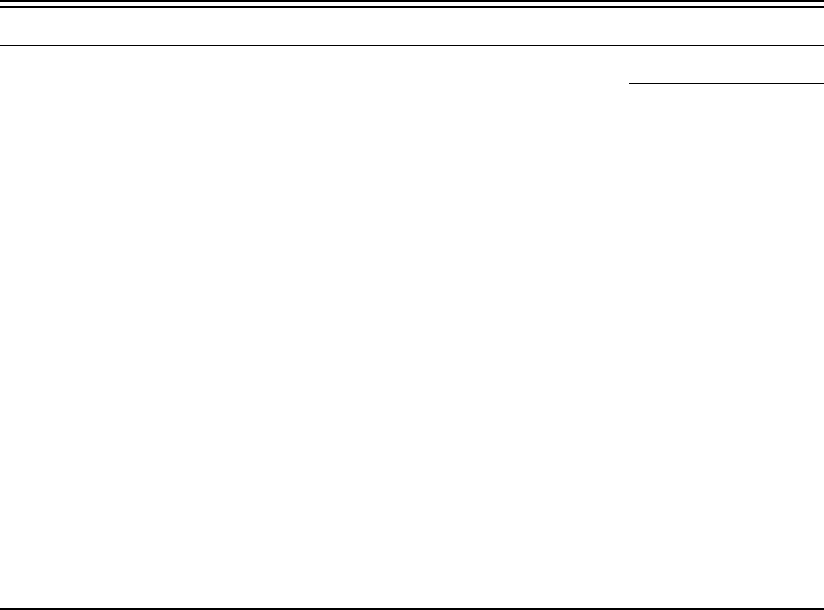
Table 8: Robustness Check Using Non-Exporting Manufacturing Firms
Sample: China NBS
Data 2001-2006; Balanced Sample of Baseline Non-Exporters
Sales Output
(1) (2)
Exposure X Exp
ort Intensity above 75th Percentile -1.758*
(0.893)
-2.052**
(0.979)
Exposure X Export Intensity between 50th and 75th Percentile -0.035
(0.618)
-0.141
(0.542)
Exposure X Export Intensity between 25th and 50th Percentile -0.218
(0.630)
-0.295
(0.630)
Exposure 0.518
(0.469)
0.472
(0.441)
Observation 157411 157411
Firm FE
Y
ear FE
Province specific linear time trend
Y
Y
Y
Y
Y
Y
Weighted rebate rate Y Y
Note: This table examines the differential effect on manufacturers which do not have record of exporting in
the NBS survey prior to the reform. The dependent variables are sales and employment.We apply inverse
hyperbolic sine transformation on sales and output to account for zero-valued observations. The regressors
of interest are a set of double interaction terms between exposure measure (as % of provincial fiscal revenue;
see Section 5.2 for details on constructing the exposure measures) and dummies indicating whether the firm’s
industry is within a certain quarter of the distribution of export intensity. The sample is a balanced panel
of above-scale manufacturers which do not have record of exporting in the NBS survey prior to the reform.
All regressions control for firm fixed effects, year fixed effects, and province-specific linear time trend, and
weighted-rebate rate. Standard errors are clustered at the province level. *** implies significance at 0.01
level, ** 0.5, * 0.1.
44
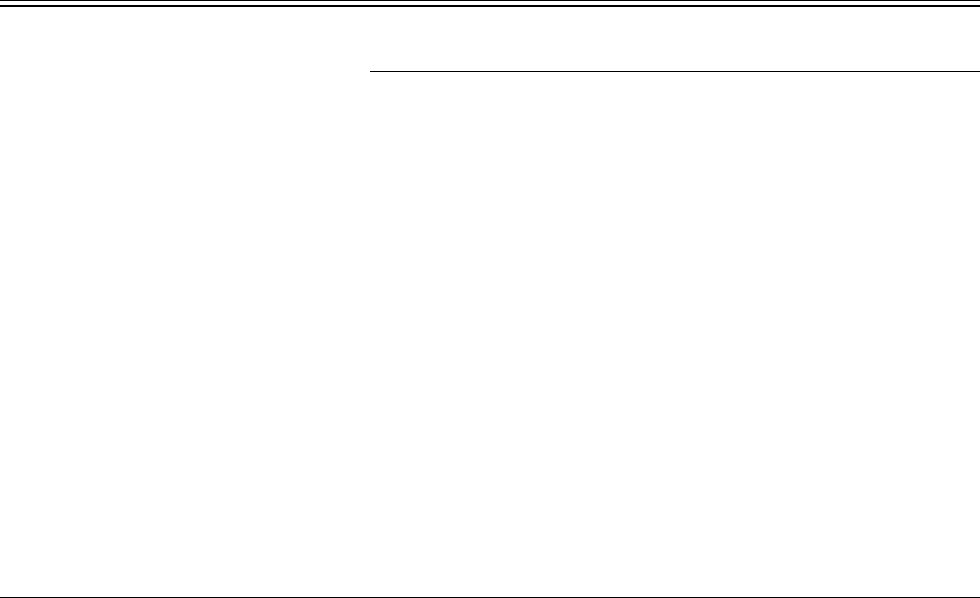
Table 9: Heterogeneous Impact on FTCs by Baseline Sourcing Activities
Sample:
China Customs Data 2001-2006, Unbalanced Sample of FTC-Industries
(1)
Dependent variable: FTC exports
(2) (3)
Predicted burden X 01-03 exports -1.111***
(0.182)
-1.112***
(0.179)
Predicted burden X 01-03 fraction
of rebate due to non-local exports
0.195
(0.496)
Predicted burden X 01-03 industrial
rebate rate
-2.46
(2)
Predicted burden 15.84***
(2.651)
15.79***
(2.719)
.139
(.325)
Observations 53076 53076 606061
Firm FE
Year FE
Province specific linear time trend
Province-level weighted rebate rate
Y
Y
Y
Y
Y
Y
Y
Y
Y
Y
Y
Y
Note: This table examines the heterogeneous effect of the reform on FTCs’ exporting activities based on size and industry. The
observation is FTCs in Columns 1 and 2 and FTC-industry sub-firms in Column 3. The dependent variables are exports through
an FTC (-industry). We apply inverse hyperbolic sine transformation on FTC exports to account for zero-valued observations.
The regressors of interest are the interaction terms between province-level predicted rebate burden (as % of provincial fiscal
revenue; see Section 5.1 for details on constructing predicted burdens) and pre-reform export volume, average rebate rate of
non-locally sourced exports, and industrial average rebate rate respectively. All regressions control for firm fixed effect, year fixed
effect, province-specific linear time trend. Standard errors are clustered at the province level. *** implies significance at 0.01
level, ** 0.5, * 0.1.
45
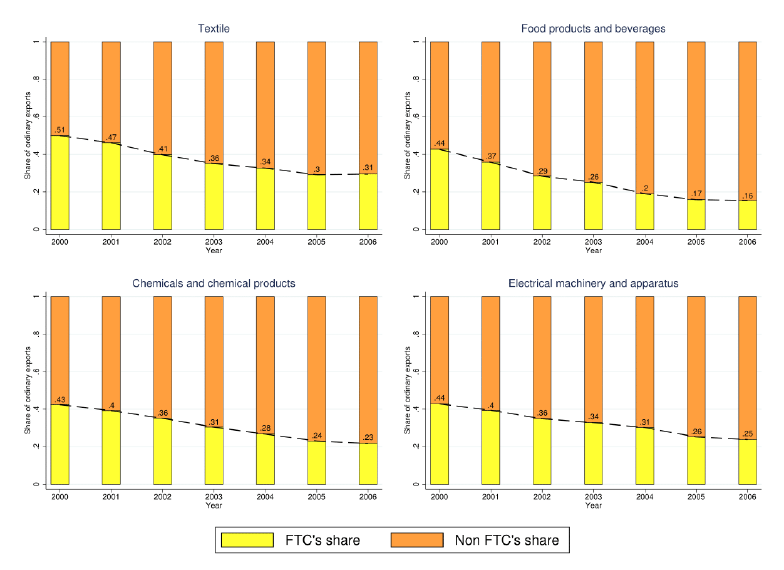
A Appendix Figures
Figure A.1: The Role of FTCs in Ordinary Exports: Four Export-intensive Industries
Note: This figure plots the share of exports via FTCs for four export-intensive industries, namely textile, food
products and beverages, chemicals and chemical products, and electrical machinery and apparatus.
1
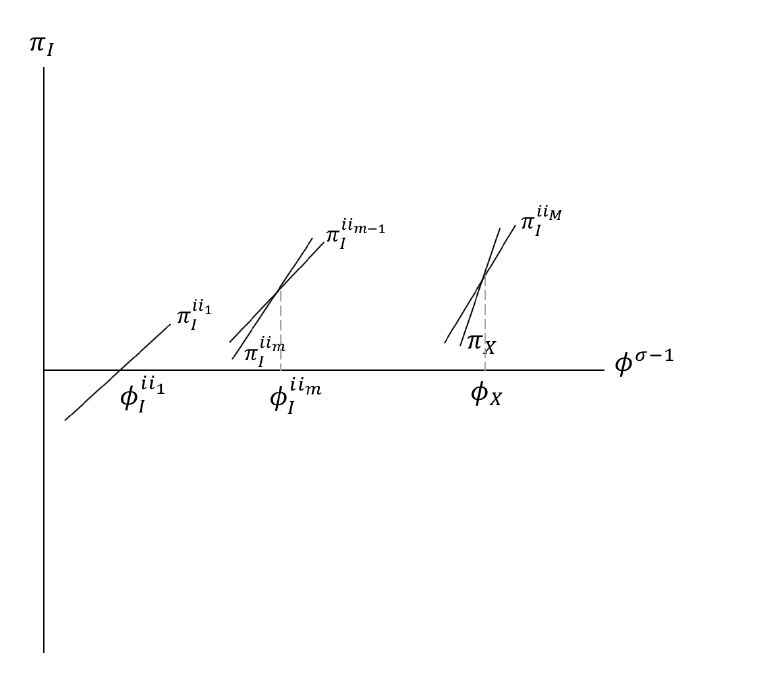
Figure A.3: The Productivity Cutoffs of Direct and Indirect Exporting Technologies
Note: This figure illustrates the productivity cutoffs of direct and indirect exporting technologies. π
I
(φ, j) is the
profits of indirect exporting from province m
φ
through m
φ
(j), the jth ranked province in province m
φ
’s indirect
exporting productivity cutoff ladder (see Section 3.3 for detail). φ
x
is the productivity cutoff of direct exporting
and φ
j
is the productivity cutoff of indirect exporting from province m
φ
through m
φ
(j).
3
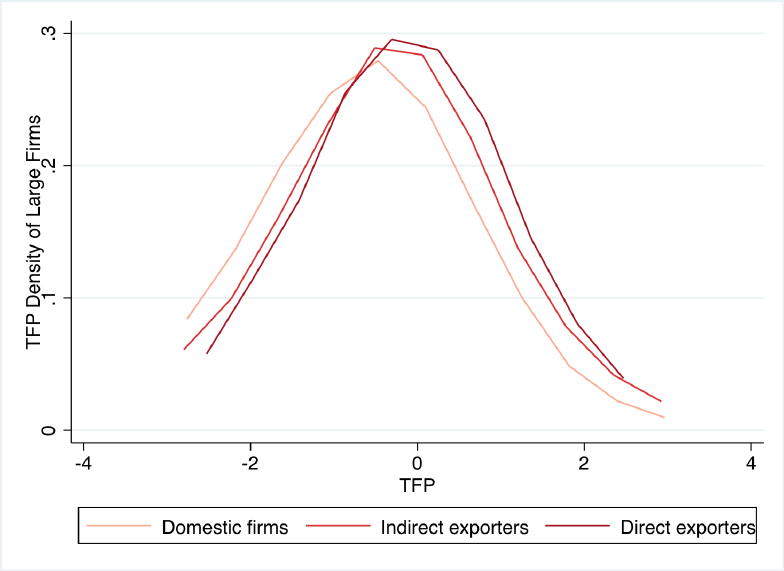
Figure A.4: The TFP Distribution of Different Exporting Technologies
Note: This figure exhibits the probability distributions of TFPs of domestic firms and firms using different
exporting technologies. The figure suggests that direct exporters are more productive than indirect exporters,
which are more productive than domestic firms.
4
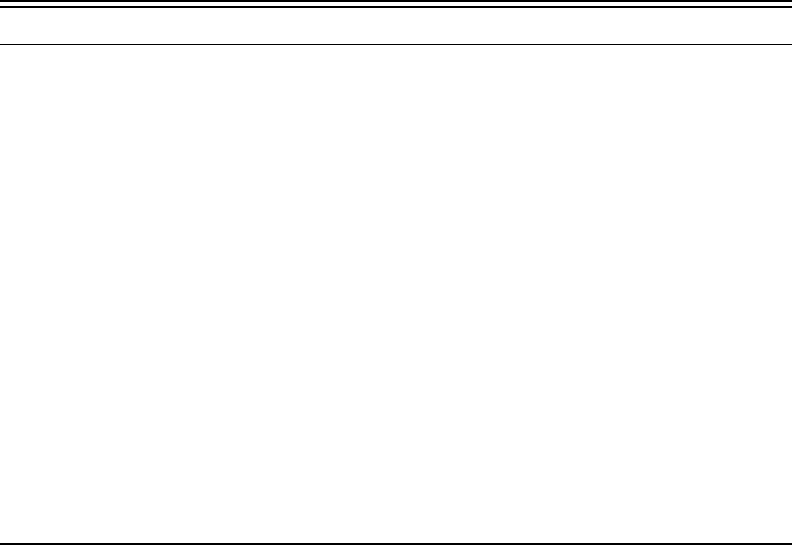
B Appendix Tables
Table B.1: Sample Description of the NBS Survey of Manufacturing Firms (2001-2006)
Year Number of Firms % of Private Domestic Firms % of Exporting Firms
Panel A. Sample: All Industrial Firms in the Manufacturing Sector
2001 154278 0.32 0.26
2002 165815 0.39 0.27
2003 181131 0.47 0.28
2004 259302 0.54 0.3
2005 251434 0.57 0.3
2006 279205 0.6 0.28
Panel B. Sample: Balanced Panel from 2001-2006
2001 65453 0.34 0.35
2002 65453 0.37 0.36
2003 65453 0.39 0.37
2004 65453 0.41 0.39
2005 65453 0.42 0.38
2006 65453 0.43 0.38
Note: This table describes the sample of firms in the NBS Survey of Manufacturing
Firms. Panel A describes the full sample. Panel B describes the balanced sample from
2001 to 2006.
5

6
Table B.2: Heterogeneity Across Provinces in Predicted Rebate Burden and Exposure to Reform
Province 01-03 Avg FTC Export made Percentage of 01-03 Avg FTC Export 2004 Predicted 2004 Rebate burden 2004 Exposure Measure
by Non-local Manufacturers made by Non-local Manufacturers Rebate Amount as % Revenue (Revenue-Based)
Beijing 0.949 32.89 0.0286 0.45 0.0036
Tianjin 0.140 10.44 0.0044 0.20 0.0175
Hebei 0.099 8.19 0.0029 0.08 0.0201
Shanxi 0.060 10.20 0.0018 0.10 0.0629
Neimenggu 0.018 8.89 0.0005 0.04 0.0177
Liaoning 0.197 13.26 0.0059 0.12 0.0159
Jilin 0.035 15.26 0.0011 0.07 0.0214
Heilongjiang 0.088 28.79 0.0026 0.09 0.0220
Shanghai 0.919 11.64 0.0289 0.33 0.0006
Jiangsu 0.434 5.84 0.0136 0.17 0.0065
Zhejiang 0.333 2.73 0.0107 0.15 0.0134
Anhui 0.274 21.50 0.0088 0.36 0.0088
Fujian 0.175 4.53 0.0055 0.16 0.0322
Jiangxi 0.231 31.27 0.0073 0.41 0.0242
Shandong 0.219 6.31 0.0069 0.09 0.0125
Henan 0.101 19.70 0.0031 0.09 0.0162
Hubei 0.154 21.15 0.0050 0.17 0.0210
Hunan 0.186 20.77 0.0059 0.21 0.0167
Guangdong 0.990 10.37 0.0316 0.21 0.0125
Guangxi 0.116 23.35 0.0037 0.16
0.0275
Hainan 0.156 48.81 0.0049 0.86 0.0053
Chongqing 0.075 12.76 0.0024 0.15 0.0098
Sichuan 0.199 27.97 0.0063 0.18 0.0097
Guizhou 0.035 18.95 0.0010 0.08 0.0527
Yunnan 0.073 16.80 0.0023 0.09 0.0117
Xizang 0.004 34.20 0.0001 0.14 0.0021
Shan3xi 0.185 24.86 0.0058 0.31 0.0111
Gansu 0.059 20.74 0.0017 0.18 0.0057
Qinghai 0.023 35.69 0.0007 0.29 0.0744
Ningxia 0.007 7.38 0.0002 0.07 0.0117
Xinjiang 0.029 16.23 0.0009 0.07 0.0118
This table shows the heterogeneity across provinces in FTCs’ pre-reform inward-lookingness and the 2004 predicted rebate burden and exposure measure. The 2001-03 average
FTC export made by non-local manufacturers and the 2004 predicted rebate amount are denoted in billion USD. The 2004 predicted rebate amount is calculated as the pre-reform
average of the value of non-local exports of an industry ×the 2004 rebate rate of the industry×25%, which is then summing over all industries, where 25% is the share of VAT rebate
financed by provincial governments. Finally, to calculate the rebate burden as % of the average pre-reform government revenue, we use information from the 2001-03 Provincial
Statistical Yearbook, where these values are reported in RMB and are converted to dollars using the exchange rate during 2001-03 (8.3 RMB ≈ 1 USD).

7
Table B.3: Correlation between Predicted Rebate Burden and Baseline Provincial Characteristics
(1) (2) (3) (4) (5) (6) (7)
Dependent variable: 2004 predicted burden
(8) (9) (10) (11) (12) (13) (14) (15) (16) (17) (18)
2003 provincial revenue .000026
(.0085)
-.28
(.3)
2003-04 growth in provincial revenue -.41
(.4)
-1.3
(.99)
2003 province balance -.0097
(.036)
.057
(.11)
2003-04 growth in provincial balance .0095
(.011)
.0072
(.026)
2003 provincial tax revenue .0043
(.013)
.41
(.37)
2003-04 growth in provincial tax -.18
(.28)
1.2
(.92)
2003 value-added tax -.012
(.044)
-.34
(.49)
2003-04 growth in value-added tax -.12
(.12)
-.32
(.59)
2003 provincial GDP -.00055
(.0008)
.0031
(.0088)
2003-04 growth in provincial GDP -.95
(.92)
-.64
(1.9)
2003 provincial population -.000015
(.000011)
.000027
(.000057)
2003-04 growth in provincial population 4.8
(3.3)
4.3
(8.3)
2003 total export -4.9e-13
(3.5e-12)
-5.4e-11
(1.4e-10)
2003 direct export -1.3e-12
(6.2e-12)
5.0e-11
(3.2e-10)
2003 indirect export -1.3e-12
(6.2e-12)
0
(.)
Number of FTCs .000015
(.000055)
-.000061
(.00045)
Number of exporters -1.5e-06
(8.5e-06)
.000082
(.0002)
Observation 31 31 31 31 31 31 31 31 31 31 31 31 31 31 31 31 31 31
Note: This table presents the regression coefficients of 2004 predicted burden on the baseline provincial characteristics that may correlate with the outcome variables in Section 5.3.1 and 5.3.2. Columns 1 to 17 are
regressions on each single provincial characteristics and Column 18 is the regression on all provincial characteristics. The results show that the 2004 predicted burden are uncorrelated with any baseline provincial
characteristics.

8
Table B.4: Correlation between Exposure Measure and Baseline Provincial Characteristics
(1) (2) (3) (4) (5) (6) (7)
Dependent variable: 2004 exposure measure
(8) (9) (10) (11) (12) (13) (14) (15) (16) (17) (18)
2003 provincial revenue -.0014
(.00084)
-.028
(.031)
2003-04 growth in provincial revenue .0046
(.042)
-.14
(.1)
2003 province balance -.0024
(.0037)
.006
(.012)
2003-04 growth in provincial balance -.00095
(.0011)
-.0022
(.0028)
2003 provincial tax revenue -.0022*
(.0013)
.024
(.039)
2003-04 growth in provincial tax .041
(.028)
.13
(.097)
2003 value-added tax -.0064
(.0044)
.049
(.052)
2003-04 growth in value-added tax .02
(.012)
.0089
(.063)
2003 provincial GDP -.00011
(.000081)
-.0002
(.00093)
2003-04 growth in provincial GDP .031
(.097)
.05
(.2)
2003 provincial population -7.1e-07
(1.2e-06)
3.8e-06
(6.0e-06)
2003-04 growth in provincial population -.34
(.35)
.33
(.87)
2003 total export -3.8e-13
(3.5e-13)
8.5e-12
(1.4e-11)
2003 direct export -7.2e-13
(6.2e-13)
-2.6e-11
(3.3e-11)
2003 indirect export -7.2e-13
(6.2e-13)
0
(.)
Number of FTCs -6.5e-06
(5.6e-06)
-.000011
(.000048)
Number of exporters -1.1e-06
(8.6e-07)
.000018
(.000021)
Observation 31 31 31 31 31 31 31 31 31 31 31 31 31 31 31 31 31 31
Note: This table presents the regression coefficients of 2004 exposure measure on the baseline provincial characteristics that may correlate with the outcome variables in Section 5.3.3 and 5.3.4. Columns 1 to 17 are regressions
on each single provincial characteristics and Column 18 is the regression on all provincial characteristics. The results show that the 2004 predicted burden are uncorrelated with any baseline provincial characteristics.
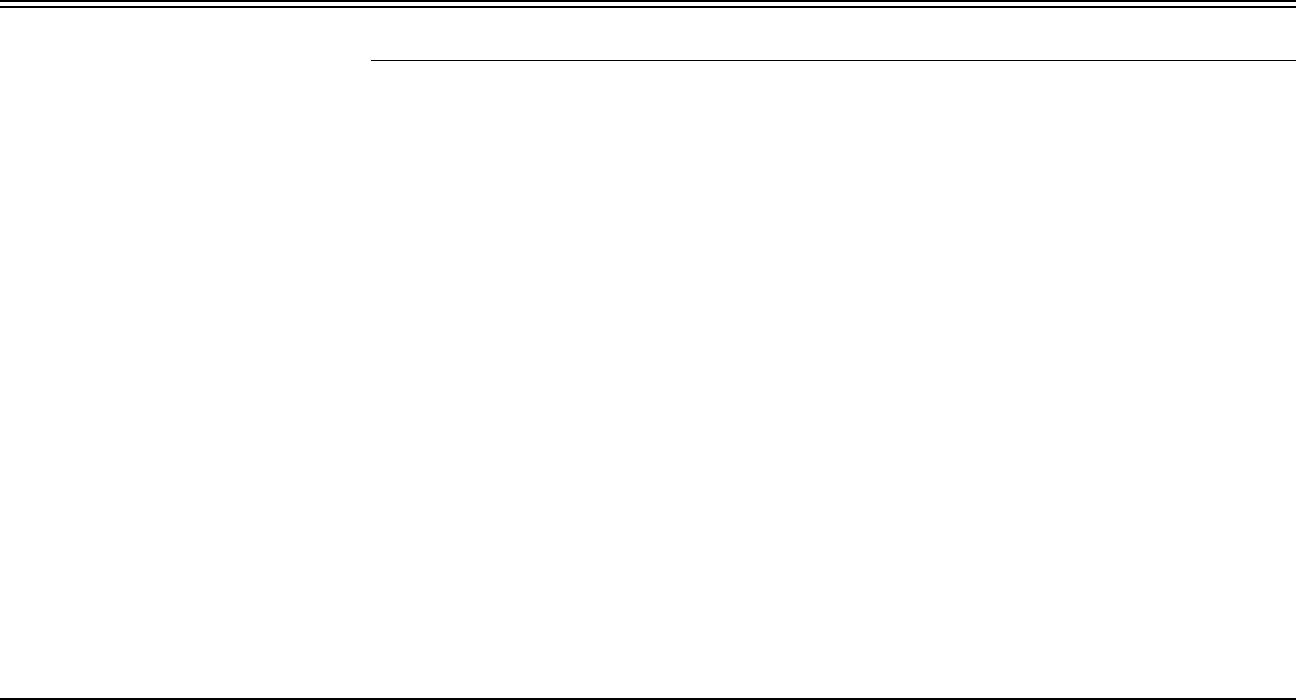
9
Table B.5: Impact on Interprovincial Trade of Indirect Exports: Alternative Measures of Rebate Burden
Sample: China Customs Data 2001-2006, Balanced Sample of Pairs of Manufacturing Province and Intermediary Province
Indirect exports from
manufacturing province
(1) (2)
Share of Indirect exports
from manufacturing province
(3) (4)
Number of FTCs hired
(5) (6)
Panel A: Province-pair level
Predicted burden (%tax) -2.762***
(0.536)
-2.637***
(0.534)
-0.00395***
(0.000958)
-0.00370***
(0.000942)
-3.670***
(1.215)
-1.795
(1.531)
Predicted burden (%balance) -0.394***
(0.0806)
-0.374***
(0.0786)
-0.000890**
(0.000449)
-0.000849*
(0.000448)
-1.045**
(0.446)
-0.749*
(0.451)
Predicted burden (%VAT) -0.644***
(0.104)
-0.613***
(0.104)
-0.00110***
(0.000333)
-0.00104***
(0.000322)
-0.964***
(0.265)
-0.490
(0.323)
Observations 5580 5580 5580 5580 5580 5580
Pair FE
Year FE
Manufacturing province specific linear time trend
Intermediary province specific linear time trend
Manufacturing province weighted rebate rate
Intermediary province weighted rebate rate
Y
Y
Y
Y
Y
Y
Y
Y
Y
Y
Y
Y
Y
Y
Y
Y
Y
Y
Y
Y
Y
Y
Y
Y
Y
Y
Y
Y
Y
Y
Panel B: Province-pair-industry level
Predicted burden (\%rev) -2.049***
(0.282)
-2.054***
(0.282)
-0.0212***
(0.00652)
-0.0212***
(0.00653)
-0.193
(0.235)
-0.199
(0.234)
Predicted burden (\%tax) -0.958***
(0.138)
-0.961***
(0.138)
-0.00633**
(0.00314)
-0.00632**
(0.00314)
0.0413
(0.162)
0.0381
(0.161)
Predicted burden (\%balance) -0.154***
(0.0265)
-0.154***
(0.0265)
-0.00159**
(0.000713)
-0.00159**
(0.000713)
-0.0240
(0.0255)
-0.0241
(0.0255)
Predicted burden (\%VAT) -0.197***
(0.0303)
-0.198***
(0.0303)
-0.00170**
(0.000691)
-0.00170**
(0.000691)
-0.00490
(0.0274)
-0.00548
(0.0273)
Observations 404052 404052 404052 404052 404052 404052
Pair FE
Year FE
Industry FE
Manufacturing province specific linear time trend
Intermediary province specific linear time trend
Manufacturing province-industry weighted rebate rate
Intermediary province-industry weighted rebate rate
Y
Y
Y
Y
Y
Y
Y
Y
Y
Y
Y
Y
Y
Y
Y
Y
Y
Y
Y
Y
Y
Y
Y
Y
Y
Y
Y
Y
Y
Y
Y
Y
Y
Y
Y
Y
Note: This table examines the changes in interprovincial trade of export goods by intermediary provinces’ predicted rebate burden. Each coefficient in the table represents a
separate regression. Dependent variables are at province-pair-year level in Panel A and at province-pair-industry-year level in Panel B. The dependent variables are indirect
exports from the manufacturing province (-industry) through FTCs in the intermediary province, the value share of indirect exports through the intermediary province over
all indirect exports from the manufacturing province (-industry), and the number of FTCs in the intermediary province hired by the manufacturing province (-industry). We
apply inverse hyperbolic sine transformation on indirect exports to account for zero-valued observations. The key regressors of interests are various measures of predicted
rebate burden of the intermediary province. In separate regressions we use predicted burdens scaled by different measures of local governments’ fiscal capacity (as % of
tax revenue, VAT revenue, and rollover balance respectively; see Section 5.1 for details on constructing predicted burdens) to test the robustness of the main results. All
regressions control for pair fixed effect, year fixed effect, intermediary-province- and manufacturing-province-specific linear time trends. Even columns further control for the
average rebate rate of the two provinces. The regressions in Panel B additionally control for industry fixed effects. Standard errors are clustered at the province-pair level.
*** implies significance at 0.01 level, ** 0.5, * 0.1.
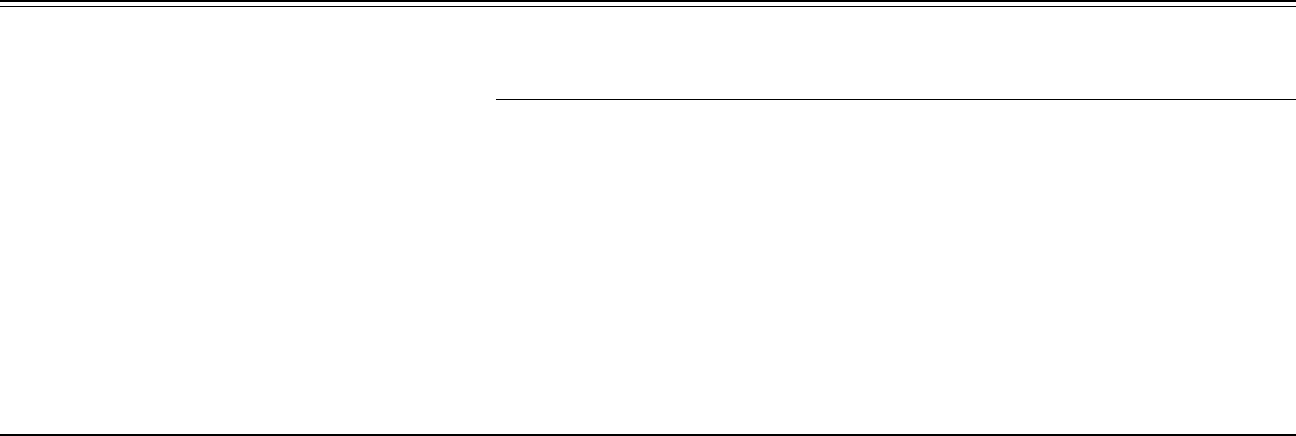
10
Table B.6: Impact on Interprovincial Trade of Indirect Exports: Two Consecutive Policy Reforms
Sample: China Customs Data 2001-2006, Balanced Sample of Pairs of Manufacturing Province and Intermediary Province
Indirect exports from
manufacturing province
(1) (2)
Share of Indirect exports
from manufacturing province
(3) (4)
Number of FTCs hired
(5) (6)
Predicted burden -1.264
(0.897)
-0.948
(0.889)
-0.00328**
(0.00150)
-0.00265*
(0.00150)
-3.105
(2.090)
1.408
(2.048)
Observations 5580 5580 5580 5580 5580 5580
Pair FE Y Y
Y Y Y Y
Year FE Y Y Y Y Y Y
Manufacturing province specific linear time trend Y Y Y Y Y Y
Intermediary province specific linear time trend Y Y Y Y Y Y
Manufacturing province weighted rebate rate Y Y Y
Intermediary province weighted rebate rate Y Y Y
Note: This table examines the changes in inte-rprovincial trade of export goods by the intermediary provinces’ predicted rebate burdens. Each observations is a pair of
a manufacturing province and an intermediary province in a certain year. The dependent variables are indirect exports from the manufacturing province through FTCs
in the intermediary province (Columns 1 and 2), the value share of indirect exports through the intermediary province over all indirect exports from the manufacturing
province (Columns 3 and 4), and the number of FTCs in the intermediary province hired by the manufacturing province (Columns 5 and 6). We apply inverse hyperbolic
sine transformation on indirect exports to account for zero-valued observations. The regressor of interests is the predicted rebate burden of the intermediary province (as
% of provincial fiscal revenue; see Section 5.1 for details on constructing predicted burdens). The predicted burden takes into account the adjustments of sharing rules
in both 2004 and 2005 (see Section about the two consecutive adjustments). All regressions control for pair fixed effect, year fixed effect, intermediary-province- and
manufacturing-province-specific linear time trends. Standard errors are clustered at the province-pair level. *** implies significance at 0.01 level, ** 0.5, * 0.1.
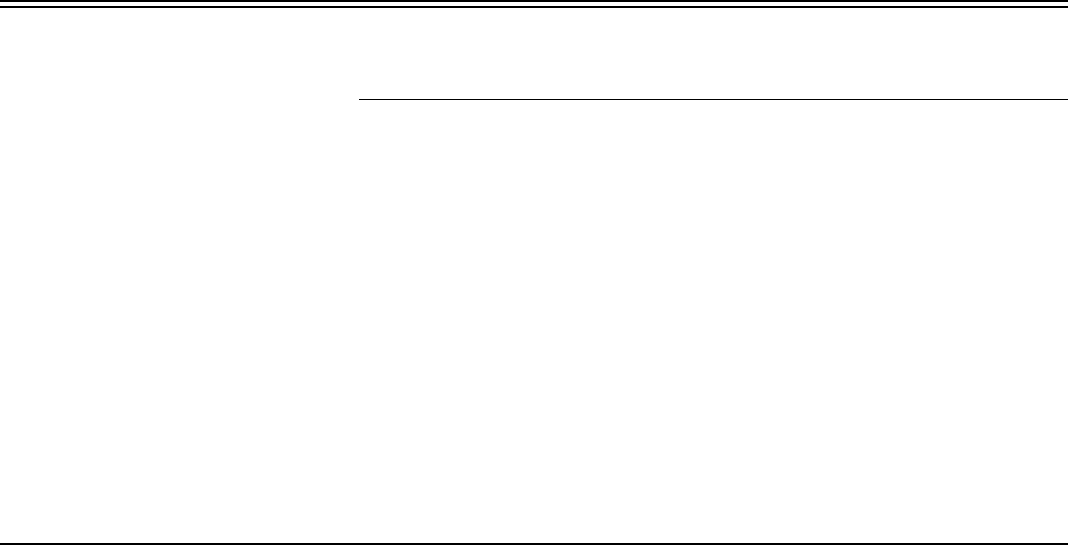
11
Table B.7: Impact on FTCs’ Sourcing Activities: Alternative Measures of Rebate Burden
Sample: China Customs Data 2001-2006, Unbalanced Sample of FTC
Non-locally sourced
FTC exports
(1) (2)
Locally sourced
FTC exports
(3) (4)
Share of non-locally
sourced FTC exports
(5) (6)
Predicted burden (%tax) -1.175***
(0.327)
-1.459*
(0.776)
-0.122
(0.158)
-0.651*
(0.330)
0.0536***
(0.0120)
0.0518**
(0.0216)
Predicted burden (%balance) -0.0993***
(0.0242)
-0.0760***
(0.0230)
0.0126
(0.0129)
0.00850
(0.0149)
0.00513***
(0.000530)
0.00384***
(0.000479)
Predicted burden (%VAT) -0.267***
(0.0934)
-0.251
(0.162)
-0.0300
(0.0396)
-0.117
(0.0715)
0.0125***
(0.00367)
0.00961*
(0.00472)
Observations 100189 100189 100189 100189 100189 100189
Firm FE
Year FE
Province specific linear time trend
Province-level weighted rebate rate
Y
Y
Y
Y
Y
Y
Y
Y
Y
Y
Y
Y
Y
Y
Y
Y
Y
Y
Y
Y
Y
Note: This table examines the changes in FTCs’ export activities by local provinces’ predicted rebate burden. Each coefficient in the table
represents a separate regression. The dependent variables are exports of an FTC bought from non-local manufacturers (Columns 1 and 2),
exports of an FTC bought from local manufacturers (Columns 3 and 4), and value share of exports from local manufacturers (Columns 5 and
6). We apply inverse hyperbolic sine transformation on non-locally and locally sourced FTC exports to account for zero-valued observations.
The regressor of interests are various measures of predicted rebate burden. In separate regressions we use predicted burdens scaled by
different measures of local governments’ fiscal capacity (as % of tax revenue, VAT revenue, and rollover balance respectively; see Section 5.1
for details on constructing predicted burdens) to test the robustness of the main results. All regressions control for firm fixed effect, year
fixed effect, province-specific linear time trend. Standard errors are clustered at the province level. *** implies significance at 0.01 level, **
0.5, * 0.1.
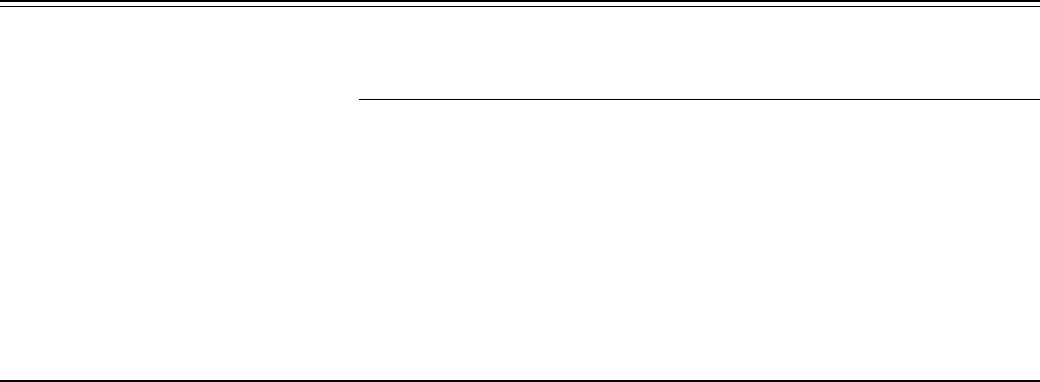
12
Table B.8: Impact on FTCs’ Sourcing Activities: Two Consecutive Policy Reforms
Sample: China Customs Data 2001-2006, Unbalanced Sample of FTC
Non-locally sourced
FTC exports
(1) (2)
Locally sourced
FTC exports
(3) (4)
Share of non-locally
sourced FTC exports
(5) (6)
Predicted burden -1.833***
(0.289)
-2.103***
(0.523)
-0.984***
(0.330)
-1.986***
(0.465)
0.0259*
(0.0135)
-0.0191
(0.0134)
Observations 100189 100189 100189 100189 100189 100189
Firm FE
Year FE
Province specific linear time trend
Province-level weighted rebate rate
Y
Y
Y
Y
Y
Y
Y
Y
Y
Y
Y
Y
Y
Y
Y
Y
Y
Y
Y
Y
Y
Note: This table examines the changes in FTCs’ export activities by local provinces’ predicted rebate burdens. The dependent variables are
exports of an FTC bought from non-local manufacturers (Columns 1 and 2), exports of an FTC bought from local manufacturers (Columns
3 and 4), and value share of exports from local manufacturers (Columns 5 and 6). We apply inverse hyperbolic sine transformation on
non-locally and locally sourced FTC exports to account for zero-valued observations. The regressor of interests is the predicted rebate
burden of the intermediary province (as % of provincial fiscal revenue; see Section 5.1 for details on constructing predicted burdens).
The predicted burden takes into account the adjustments of sharing rules in both 2004 and 2005 (see Section about the two consecutive
adjustments). All regressions control for firm fixed effect, year fixed effect, province-specific linear time trend. Standard errors are
clustered at the province level. *** implies significance at 0.01 level, ** 0.5, * 0.1.
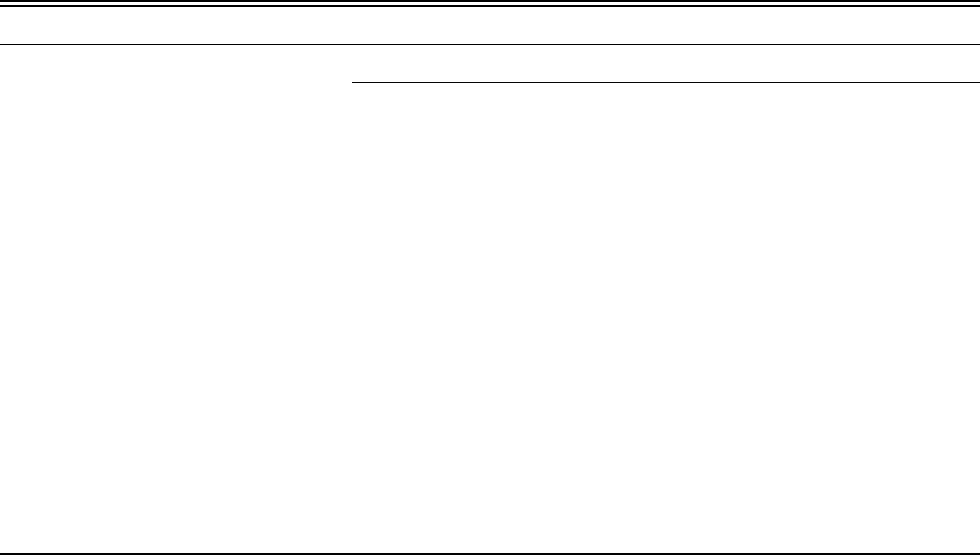
Table B.9: Impact on Manufacturing Exports: Alternative Measures of Exposure Measure
Sample: China Customs Data 2001-2006, Balanced Sample of Chinese Province-Industries
Indirect exports
(1) (2)
Total exports
(3) (4)
Exposure (%tax) -4.5***
(.992)
-4.52***
(.986)
-6.1***
(1.35)
-6.1***
(1.34)
Exposure (%balance) -.196*
(.1)
-.199*
(.102)
-.275*
(.15)
-.275*
(.15)
Exposure (%VAT) -.739***
(.219)
-.741***
(.218)
-.966***
(.263)
-.966***
(.262)
Observations 11862 11862 11862 11862
Province FE
Industry FE
Year FE
Province specific linear time trend
Weighted rebate rate
Y
Y
Y
Y
Y
Y
Y
Y
Y
Y
Y
Y
Y
Y
Y
Y
Y
Y
Note: This table examines the changes in manufacturing provinces’ exporting activities by exposure to reform. Each coefficient
in the table represents a separate regression. The dependent variables are total exports produced in a manufacturing province-
industry (Columns 1 and 2) and indirect exports produced in a province-industry (Columns 3 and 4). We apply inverse hyperbolic
sine transformation on indirect exports and total exports to account for zero-valued observations. The regressors of interest are
various exposure measures. In separate regressions we use exposure measures constructed using different predicted burdens
(as % of tax revenue, VAT revenue, and rollover balance respectively; see Section 5.2 for details on constructing the exposure
measures) to test the robustness of the main results. The sample is a balanced panels of province-industries from 2001 to 2006.
All regressions control for province fixed effects, year fixed effects, industry fixed effects, province-specific linear time trend, and
weighted-rebate rate. Standard errors are clustered at the province level. *** implies significance at 0.01 level, ** 0.5, * 0.1.
13
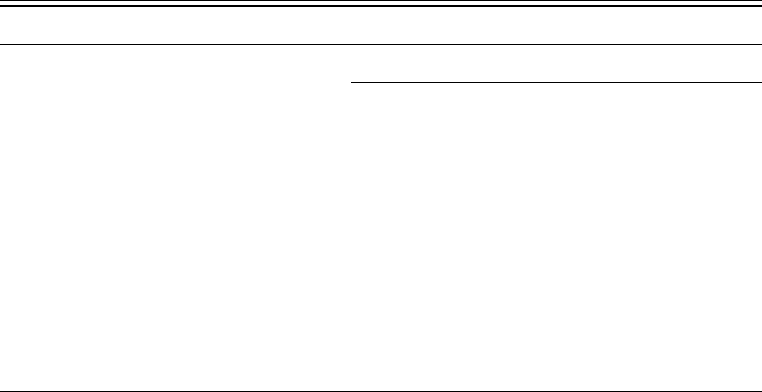
Table B.10: Impact on Manufacturing Exports: Two Consecutive Policy Reforms
Sample: China Customs Data 2001-2006, Balanced Sample of Manufacturing
Province-Industries
Indirect exports
(1) (2)
Total exports
(3) (4)
Exposure -7.94***
(2.06)
-7.94***
(2.05)
-10.8***
(2.63)
-10.8***
(2.62)
Observations 11862 11862 11862 11862
Province FE
Industry FE
Year FE
Province specific linear time trend
Weighted rebate rate
Y
Y
Y
Y
Y
Y
Y
Y
Y
Y
Y
Y
Y
Y
Y
Y
Y
Y
Note: This table examines the heterogeneous effect of the reform on Chinese manufacturers due
to ownership types and baseline firm size. Dependent variables are firms’ indirect exports, direct
expors, and total exports. We apply inverse hyperbolic sine transformation on indirect exports,
direct exports, and total exports to account for zero-valued observations. The regressor of interest
is the triple interaction term between the pre-reform dependence on indirect exporting (defined as
the pre-reform fraction of indirect exports over total exports), a post-reform dummy, and either a
dummy indicating whether a manufacturer is SOE in Panel A or the baseline average output in
Panel B. All regressions control for firm fixed effects, year fixed effects, province-specific linear time
trend, weighted-rebate rate, and other relevant interaction terms in Equation (9). The sample is a
balanced panel of above-scale manufacturers from 2001 to 2006. We further restrict the sample in
Panel A to either SOEs or private firms. SOE is defined as firms whose state capital constitutes
more than 50% of the total capital. Standard errors are clustered at the province level. *** implies
significance at 0.01 level, ** 0.5, * 0.1.
14
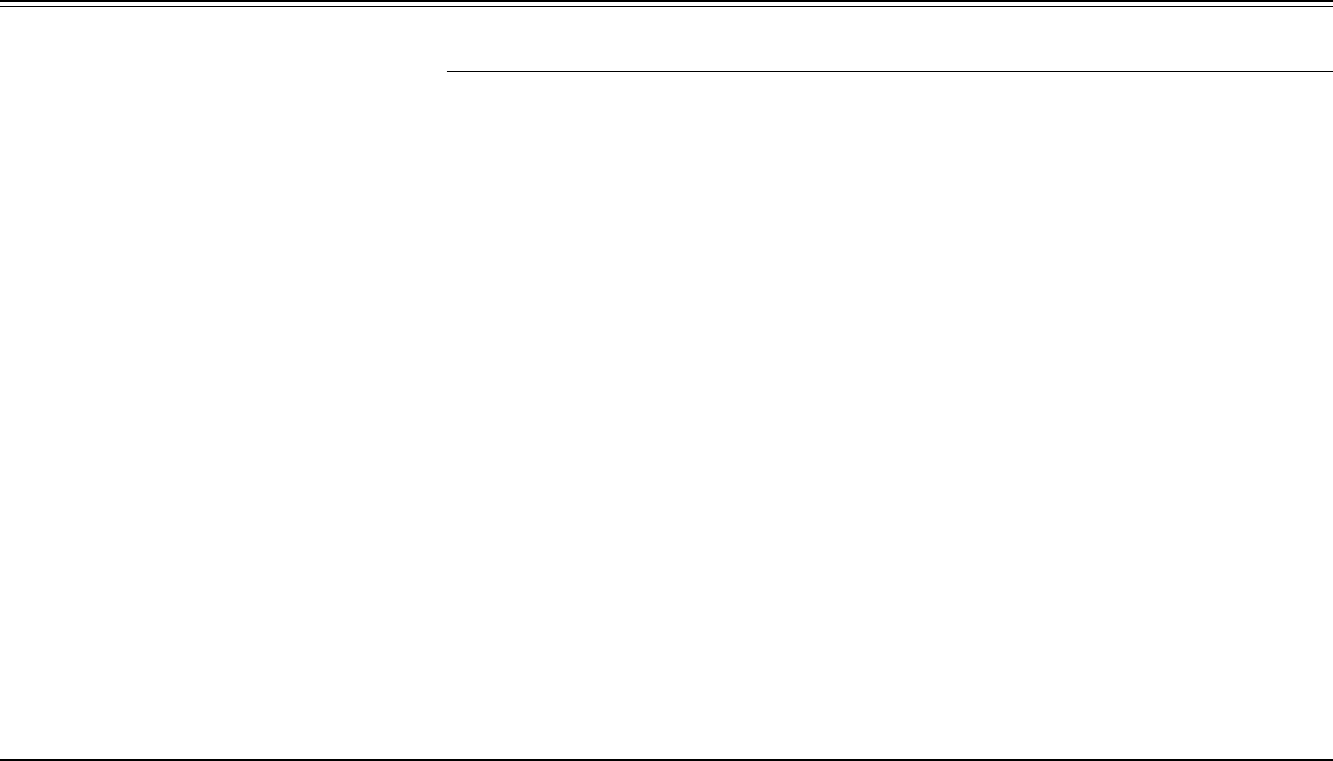
15
Table B.11: Impact on Manufacturing Firms: Alternative Measures of Exposure Measure
Sample: China NBS Data 2001-2006, Balanced Sample of Baseline Exporters
Indirect exports
(1)
Direct exports
(2)
Total exports
(3)
Is indirect exporter
(4)
Is direct exporter
(5)
IndirectDependence X Exposure (%tax) -28.483***
(6.527)
11.125*
(6.222)
-28.563***
(7.045)
-1.642***
(0.455)
2.151***
(0.238)
Exposure (%tax) 24.921***
(5.979)
-8.584
(5.942)
25.045***
(6.557)
1.436***
(0.410)
-1.821***
(0.162)
IndirectDependence X Exposure (%balance) -4.958***
(0.969)
1.940**
(0.753)
-5.048***
(1.041)
-0.295***
(0.064)
0.329***
(0.055)
Exposure (%balance) 4.283***
(0.933)
-1.649**
(0.657)
4.372***
(1.018)
0.250***
(0.060)
-0.298***
(0.040)
IndirectDependence X Exposure (%VAT) -6.290***
(1.602)
2.472
(1.506)
-6.275***
(1.720)
-0.358***
(0.111)
0.480***
(0.065)
Exposure (%VAT) 5.522***
(1.446)
-2.014
(1.423)
5.506***
(1.572)
0.315***
(0.099)
-0.413***
(0.049)
Observation 61206 61206 61206 61206 61206
Firm FE
Year FE
Province specific linear time trend
Weighted rebate rate
Y
Y
Y
Y
Y
Y
Y
Y
Y
Y
Y
Y
Y
Y
Y
Y
Y
Y
Y
Y
Note: This table examines the changes in Chinese manufacturers’ production and exporting activities by its exposure to reform and reliance on indirect export channel. Each
coefficient in the table represents a separate regression. The dependent variables are firms’ indirect exports, direct exports, total exports, and whether firms are indirect exporters
or direct exporters. We apply inverse hyperbolic sine transformation on indirect exports, direct exports, and total exports to account for zero-valued observations. The regressor
of interest is the interaction term between the pre-reform level of dependence on indirect exporting and the exposure measure. In separate regressions we use exposure measures
constructed using different predicted burdens (as % of tax revenue, VAT revenue, and rollover balance respectively; see Section 5.2 for details on constructing the exposure
measures) to test the robustness of the main results. The pre-reform level of dependence on indirect exporting is defined as the pre-reform fraction of indirect exports over total
exports. The sample is a balanced panel of above-scale existing exporters prior to the reform. All regressions control for firm fixed effects, year fixed effects, and province-specific
linear time trend, weighted-rebate rate and exposure. Standard errors are clustered at the province level. *** implies significance at 0.01 level, ** 0.5, * 0.1.

16
Table B.12: Impact on Non-Exporters
Sample: China NBS Data 2001-2006, Balanced Sample of Baseline Non-Exporters
Indirect exports
(1)
Direct exports
(2)
Total exports
(3)
Is indirect exporter
(4)
Is direct exporter
(5)
Exposure -0.127
(0.458)
0.013
(0.123)
-0.137
(0.460)
-0.023
(0.032)
0.002
(0.009)
Observation 157411 157411 157411 157411 157411
Firm FE
Year FE
Province specific linear time trend
Weighted rebate rate
Y
Y
Y
Y
Y
Y
Y
Y
Y
Y
Y
Y
Y
Y
Y
Y
Y
Y
Y
Y
Note: This table examines the changes in Chinese manufacturers’ production and exporting activities by its exposure to reform and reliance on indirect export
channel. The sample is a balanced panel of above-scale non-exporters prior to the reform. The dependent variables are firms’ indirect exports, direct exports, total
exports, and whether firms are indirect exporters or direct exporters. We apply inverse hyperbolic sine transformation on indirect exports, direct exports, and total
exports to account for zero-valued observations. The regressor of interest is the exposure measure (as % of provincial fiscal revenue; see Section 5.2 for details on
constructing the exposure measures). All regressions control for firm fixed effects, year fixed effects, and province-specific linear time trend, and weighted-rebate
rate. Standard errors are clustered at the province level. *** implies significance at 0.01 level, ** 0.5, * 0.1.
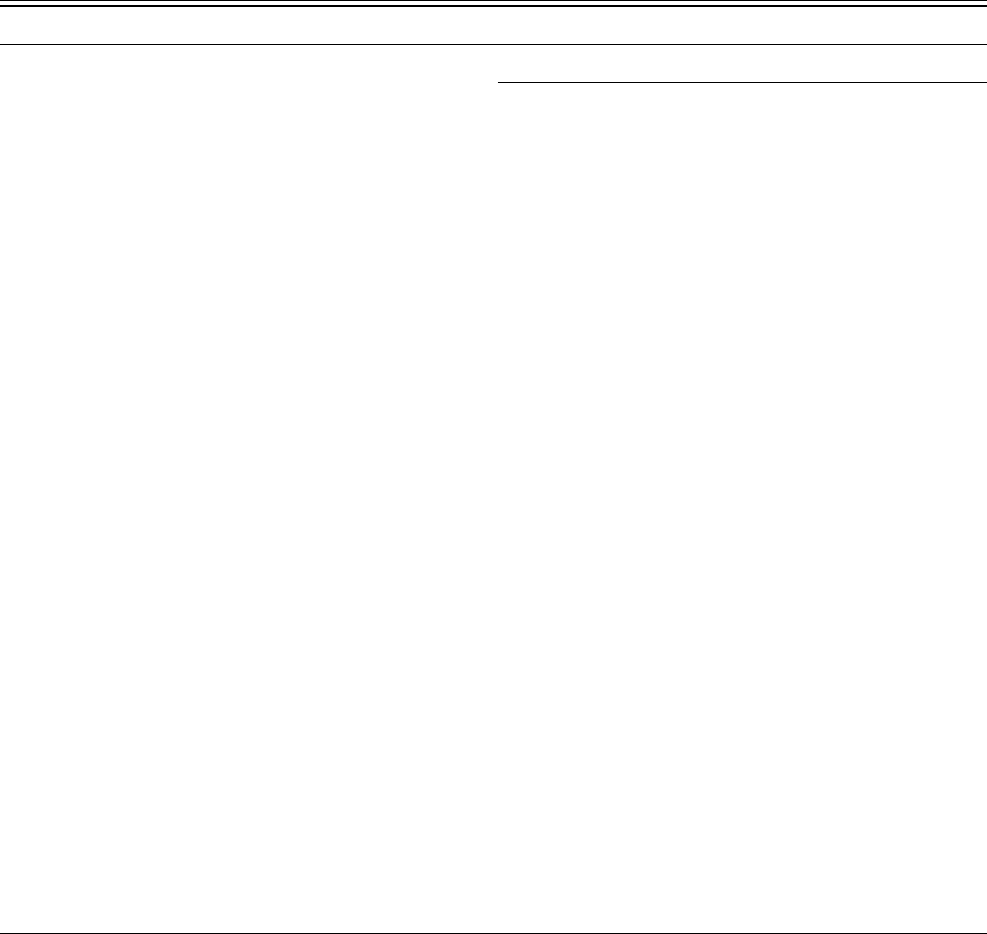
Table B.13: Heterogeneous Impact on Manufacturing Firms by Ownership Type and Baseline Firm Size
Sample: China NBS Data 2001-2006, Balanced Sample of Baseline Exporters
Indirect exports
(1)
Direct exports
(2)
Total exports
(3)
Panel A: Heterogeneity on Firm Ownership
IndirectDependence X Post X SOE 1.87***
(.67)
2.65***
(.803)
2.17***
(.67)
IndirectDependence X Post -3.27***
(.326)
1***
(.22)
-3.4***
(.32)
Post X SOE -2.03***
(.662)
-3.1***
(.828)
-2.31***
(.649)
Observation 30036 30036 30036
Panel B: Heterogeneity on Firm Size
IndirectDependence X Post X Pre-reform Output .102
(.121)
.342
(.275)
.192**
(.0796)
IndirectDependence X Post -3.62**
(1.37)
-2.63
(2.83)
-4.66***
(.919)
Post X Pre-reform Output .0546
(.0668)
-.193
(.284)
-.0171
(.0788)
Observation 61272 61272 61272
Firm FE
Year FE
Province specific linear time trend
Weighted rebate rate
Y
Y
Y
Y
Y
Y
Y
Y
Y
Y
Y
Y
Note: This table examines the heterogeneous effect of the reform on Chinese manufacturers due to ownership types and baseline
firm size. Dependent variables are firms’ indirect exports, direct expors, and total exports. We apply inverse hyperbolic sine
transformation on indirect exports, direct exports, and total exports to account for zero-valued observations. The regressor of
interest is the triple interaction term between the pre-reform dependence on indirect exporting (defined as the pre-reform fraction
of indirect exports over total exports), a post-reform dummy, and either a dummy indicating whether a manufacturer is SOE in
Panel A or the baseline average output in Panel B. All regressions control for firm fixed effects, year fixed effects, province-specific
linear time trend, weighted-rebate rate, and other relevant interaction terms in Equation (9). The sample is a balanced panel
of above-scale existing exporters prior to the reform. We further restrict the sample in Panel A to either SOEs or private firms.
SOE is defined as firms whose state capital constitutes more than 50% of the total capital. Standard errors are clustered at the
province level. *** implies significance at 0.01 level, ** 0.5, * 0.1.
17

C Mathematical Proofs
Prediction 1. For each province, the number and export volume of direct exporters weakly increases
in c.
ii
M
Proof. Suppose after the increase in c province i
M
is still economically viable. Since f > f
ii
m
∀m <
I I
M, province i
M
is still the highest in the indirect export productivity cutoff ranking of province i.
Therefore, we have
>0
<0
>0
z}|{
z }| {
ii
M
σ
z}|{
)
1−σ
1−σ
∂φ
X
1
1 − (γ
I
= A ×
f
X
− f
ii
M
∂c 1 − σ
I
≥0
=0
z }| { z }| {
ii
M
ii
M
)
−σ
dγ
I
(f
X
− f
ii
M
(1 − (γ
ii
M
)
1−σ
)
df
I
(σ − 1)(γ
ii
M
) +
I I I
dc dc
(f
X
− f
ii
M
)
2
I
≤ 0
Th
us, as c increases the productivity cutoff of direct export shifts to the left, implying more manu-
facturers would export directly. On the other hand, if province i
M
is no longer an economically viable
option because of the increase in variable cost, then either a province down the productivity cutoff
ranking or a previously economically unviable province would replace i
M
as the highest in the ranking.
It can be easily shown that the resulting productivity cutoff of direct export would be smaller than
φ
X
even before the reform. As a result, the number of direct exporters increases in c. The exporting
1−σ
revenue of direct exporter φ is r
X
(φ) = R
τ
which does not change with c, so province i’s total
ρφP
direct export volume
Z
∞
R
X
= r
X
(φ)dG(φ)
φ
X
(12)
increases in c as the range of integration expands with c.
Here we relax the assumption that the local province of firm φ is ranked the lowest in the indirect
export productivity cutoff ladder, i.e. i = i
1
, and prove a more general version of Prediction 2:
Prediction 2
0
. For each province, the number of its indirect exporters weakly decreases in c. Further-
dγ
ii
m
�
γ
ii
m
/dc
σ
I I
more, the export volume of its indirect exporters also weakly decreases in c if
dγ
ii
n
>
γ
ii
n
∀m, n s.t. γ
ii
m
<
I
I
/dc
I
γ
ii
n
I
.
Proof. Suppose after the increase in c province i
1
is still economically viable and therefore the lowest
18

in the productivity cutoff ranking.
>0
<0
>0
z}|{
z
}|
σ
{
∂φ
ii
1
z}|{
)
1−σ
1−σ
(γ
ii
1
1
I I
= A ×
f
ii
1
∂c 1 − σ
I
≤0
=0
z }| { z }| {
dγ
ii
1
df
ii
1
(1 − σ)(γ
ii
1
)
−σ
I
f
ii
1
(γ
ii
1
)
1−σ
I
−
I I I
dc dc
(f
ii
1
)
2
I
≥ 0
Th
us, the productivity cutoff of indirectly exporting from the most easily accessed FTC province
weakly increases in c. On the other hand, if province i
1
is no longer an economically viable option
because of the increase in variable cost, then either a province up the productivity cutoff ranking or a
previously economically unviable province would replace i
1
as the lowest in the ranking. It can be easily
shown that the resulting lowest productivity cutoff of indirect exporting would be larger than φ
ii
1
even
I
before the reform, leading to the same result as above. Combining with the proof of Prediction 1 we
can see that the range of productivity of indirect export [φ
ii
1
, φ
ii
M
] shrinks as c increases.
dγ
ii
m
�
γ
ii
m
I I
/dc
σ
I I
Now we show that, given
dγ
ii
n
>
γ
ii
n
∀m, n s.t. γ
ii
m
< γ
ii
n
, the volume of indirect export
I I
I
/dc
I
from province i decreases as well. To do so, we demonstrate that the volume of indirect export from any
existing indirect exporters of province i decreases in c. First, we show that, if the set of economically
viable provinces (and therefore the productivity cutoff ranking) does not change, then all such provinces
∂φ
ii
m
become less accessible after the reform, i.e.
I
≥ 0 ∀m ∈ [1, M]. We have proven this for m = 1. For
∂c
m ≥ 2,
>0
>0
z
<
}|
0
{
z }| {
(γ
ii
m
ii
j−1
σ
∂φ
ii
m
z}|{
)
1−σ
− (γ )
1−σ
1−σ
1
I I I
= A ×
∂c 1 − σ
f
ii
m
− f
ii
m−1
I I
>0
z }| {
>0
<0
z }| {
dγ
ii
m
ii
m−1
z }| {
�
dγ
(γ
ii
m
)
−σ
I
ii
m−1
)
−σ
I
(f
ii
m
ii
m−1
(1 − σ) − (γ − f )
I I I I
dc dc
−
(f
ii
m
ii
m−1
− f )
2
I I
=0
z }| {
�
df
ii
m
ii
m−1
df
!
((γ
ii
m
)
1−σ
− (γ
ii
m−1
)
1−σ
)
I I
−
I I
dc dc
(f
ii
m
ii
m−1
− f )
2
I I
> 0
(13)
(14)
ii
ii
∂
2
π
m
(φ) ∂
2
π
n
(φ)
which is a direct result from the inequality condition that implies
I
<
I
σ−1 σ−1
< 0 if γ
ii
m
<
∂φ ∂c ∂φ ∂c
I
γ
ii
n
45
i
. This means that, after the reform, firms used to indirectly export through province i
m−1
would
find it even more challenging to move up to i
m
which had a higher fixed cost but a lower variable
ii
∂φ
m
45
Even though we prove that
I
> 0, without further assumptions we do not know about the relative magnitudes of
∂c
the derivatives for different m.
19
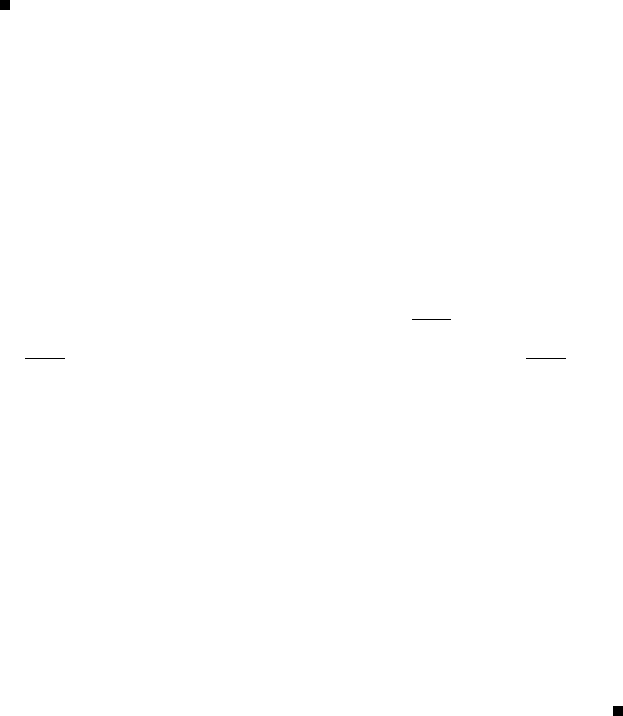
cost of indirect exporting, since marginal profit of exporting through province i
m
would decrease more
substantially. The increasing barrier to entry thus drives the productivity cutoff of province i
m
to the
right.
Given the results above, a firm which used to export indirectly through province i
m
would find itself
in either of the four following situations after the reform:
1. continue to export through i
m
;
2. export through some province lower than i
m
in the pre-reform productivity cutoff ranking;
3. export through some province used to be economically unviable;
4. exit the foreign market.
In first three cases the firm would face a higher variable cost of indirect exporting unless it continues
to export through its local province, and in the last case the firm would stop exporting all together.
Therefore, a firm’s indirect export will always weakly decrease in c regardless of its productivity. Since
the number of indirect exporters of province i also decreases in c, its volume of indirect export decreases
in c.
Prediction 3. Given an increase in c, for any province i:
1. the local exporters rely more on local intermediary after the reform, i.e. the number and export
volume of i’s indirect exporters through local intermediary (which is i
1
) increase in c;
2. the export volume of i’s indirect exporters through province i
m
, m ∈ [2, M − 1] decreases if the
price effect outweighs the network effect;
3. the number and export volume of m’s indirect exporters through province i
M
decreases.
Proof. Since own province has the lowest fixed cost, the own province is ranked at the last in the produc-
ii
1
dγ
tivity cutoff ladder, i.e., i = i. By Assumption 1
I
1
= 0. We can therefore observe from inequality
dc
ii
ii
∂φ
1
∂φ
2
(13) that
I
= 0. From inequality (14) we also know that
I
> 0. Therefore, as c increases the
∂c ∂c
range of productivity that chooses to indirectly export from province i expands. As for the effect on
R
ii
1
, by Assumption 1 the price effect is zero. Since Θ(φ) is an
I
increasing function of φ, the network
effect is positive. Thus, the indirect export volume through province i’s own intermediary increases.
As for province i
m
, m ∈ [2, M − 1], the price effect is strictly negative by Assumption 1. If in
addition the price effect dominates the network effect, the overall effect of c on R
ii
m
follows the sign
I
of
the price effect. In this case, as c increases, province i’s indirect export volume through each of such
provinces decreases.
For province M, the price effect is also strictly negative. Moreover, the network effect is also strictly
negative, since we have proved by inequality (12) that φ
X
is a decreasing function of c and by inequality
ii
(14) that φ
M
is an increasing
I
function of c. These together imply that the number and export volume
of province i’s indirect exporters through i
M
decrease as c increases.
Prediction 4. If the price effects are sufficiently larger than the network effects, given an increase in
c a province will experience larger percentage decrease in indirect export through provinces from which
higher cost shocks are generated.
20

∂γ
ii
m
∂γ
ii
n
∂R
ii
m
∂R
ii
n
/∂c /∂c /∂c /∂c
I I I I
Proof. We want to prove that if
γ
ii
m
>
γ
ii
n
then
R
ii
m
<
R
ii
n
. Suppose the price effects
I I I I
ii
m+1
ii
m
∂R
ii
m
R
φ
∂r (φ)
I
I
I
are sufficiently larger than the network effects such that ≈ dG(φ), we only need to
∂c
φ
ii
m
∂c
I
show that the price effect as a percentage of indirect export volume when exporting through province
i
m
is larger than that when through province i
n
. The price effect through i
m
is
Z Z
∂r
ii
m
dγ
ii
m
1−σ
I
(φ)
I
τ
dG(φ) = (1 − σ)(γ
ii
m
)
−σ
RdG(φ)
I
∂c dc ρφP
Z
1−σ
dγ
ii
m
/dc τγ
ii
m
I I
= (1 − σ) RdG(φ)
γ
ii
m
ρφP
I
dγ
ii
m
/dc
I
R
ii
m
= (1 − σ)
γ
ii
m
I
ii
dγ
m
/dc
The price effect relative to export volume through i
I
m
is therefore (1 − σ)
ii
m
. Similarly, the
γ
I
ii
n
relative
dγ /dc
price effect through i
n
is (1 − σ)
I
ii
n
, and percentage decrease in indirect exporting through
γ
I
ii
m
ii
n
i
m
will be higher
∂γ /∂c ∂γ /∂c
than that through i
I I
n
as long as
ii
>
ii
.
γ
m
γ
n
I I
Prediction 5. Suppose the price effects are sufficiently larger than the network effects. Given a
marginal increase in c, a province with higher exposure will experience a larger percentage decrease in
export volume of indirect exporters.
Proof. The indirect exporting volume from province i is
X
R
ii
m
R
i
= .
I
I
m
Following Equation (1), if the price effects are sufficiently larger than the network effects, the per-
centage change in indirect exporting volume w.r.t. a marginal increase in c is approximately
X
∂R
ii
m
∂R
i
/∂c
1
I I
=
R
i
R
i
∂c
I
m
I
Z
ii
m+1
X
φ
I
∂r
ii
m
1
I
(φ)
≈ dG(φ)
R
i
φ
ii
m
∂c
m
I
I
X
∂γ
ii
m
R
ii
m
I
/∂c
I
= (1 − σ)
γ
ii
m
R
i
m
I
I
X
B
ii
m
ω
ii
m
= (1 − σ)
I
m
= (1 − σ)E
i
.
(15)
where the second to third step follows from Equation (15). Thus, if province i has higher exposure than
i
j
∂R /∂c
∂R /∂c
province j, we can easily see from above that
I
R
i
<
I
j
.
I
R
I
21
